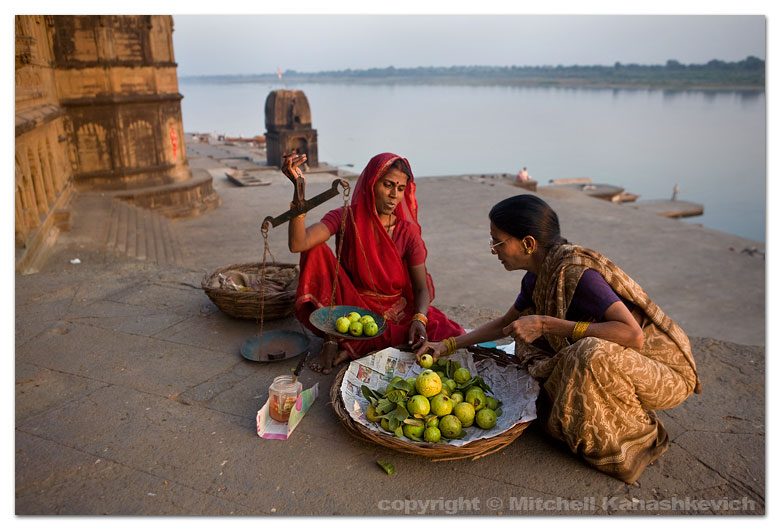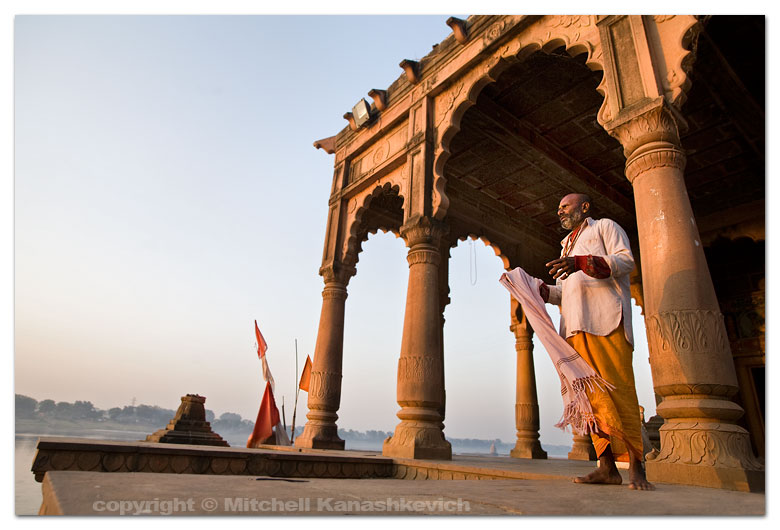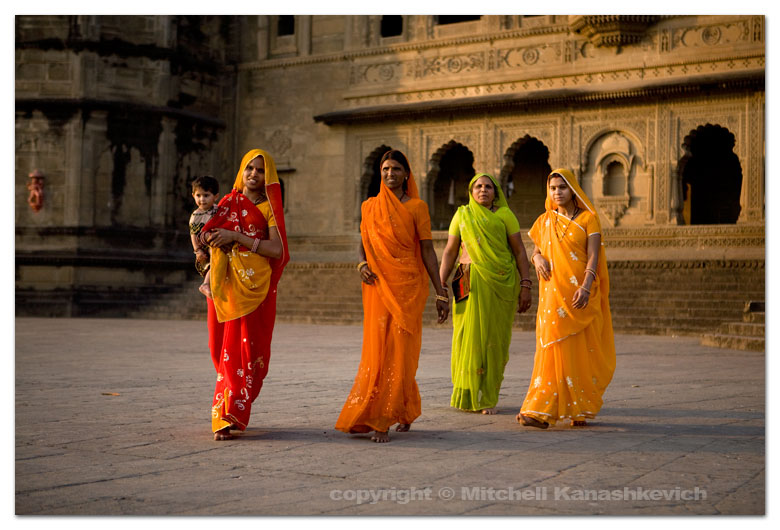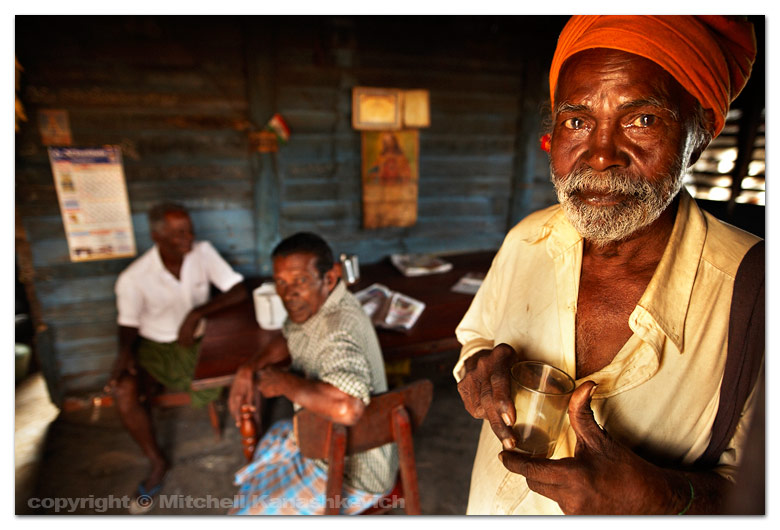All Journeys Have to End
Just under two months in India and my Himalayan adventure has come to an end. As usual, time flew by very quickly and as usual I wish I could stay longer. I am tired though. This trip was intense in so many ways. Riding in the mountains does take a toll on the body and the motorbikes. Both “machines” have cracked chassis from the horrendous (but spectacular) Zanskar road.
Building roads above the clouds
Journey of a Lifetime
Winding roads with sheer drops to hundreds of meters, huge rocks being exploded to clear those roads, ancient cultures clinging to their timeless ways of living and of course, incredible, awe-inspiring mountains, everywhere you look. This trip of mine to the Himalayas has been as exciting, as adventurous and as creatively satisfactory as I had dreamt and hoped it would be.
Off to the Himalayas
While in the Philippines, I somewhat spontaneously decided to go to the Indian Himalayas for my 30th birthday. I’ve jokingly called it an early mid-life crisis. Part of the reason for this trip is to prove to myself that I can ride to Ladakh on a motorcycle, another part is that I just want to live in the moment to the fullest and, of course I have some photographic ideas too.
Bangalore, Pune, Mumbai and Good Bye India.
 Bangalore - we didn’t originally plan to stop in this city, but it was the nearest place from where we could get a train to Pune, our final stop before we’d fly from Mumbai. I didn’t want to ride any more either, but all trains to Bangalore were full and you can’t put a motorcycle on a bus.
Bangalore - we didn’t originally plan to stop in this city, but it was the nearest place from where we could get a train to Pune, our final stop before we’d fly from Mumbai. I didn’t want to ride any more either, but all trains to Bangalore were full and you can’t put a motorcycle on a bus.
I planned to ride the 480km from Madurai to Bangalore over two days, but somehow Tanya and I summoned up enough energy and finishing the ride in one day seemed possible.
480km is the longest distance that I have ever ridden in one day on a motorcycle, anywhere. If I were riding in Australia, this distance would not seem that far, really. But this is India and here distance is not only measured by milestones along the road. It is measured by how many cows, chickens, goats, children and women with firewood on their heads you almost hit (because they almost jumped under your wheels) as well as how many buses and trucks almost hit you (because they are bigger and don’t care). It’s a long distance, almost unbearably long. Your butt feels like it’s burning on the motorcycle seat all the way, but you finally pass the pain barrier after 400km, you stop feeling or caring.
Bangalore – the “I.T. City”, “The future of India”. You could have fooled me by the last 20km of road that leads there. Countless potholes, puddles of black water, construction, everywhere and that horrible, dark smoke, the whole thing felt like traveling through a post-apocalyptical landscape, and then you reach the city itself. I’m sure that Bangalore is as amazing as people make it out to be, but whatever it has to offer, it can offer to someone else. I had no time to discover its charm under the black cloud of traffic smoke; I was to finish my “business” and to head off.
At the railway station we sent what was left of the motorcycle back to my Gujarati friend Hardik, who is now in Ahmedabad (Gujarat’s commercial capital). Then it was our turn to go. We’ve become soft when it comes to public transport. We avoid buses because of the loud music and no leg-room; we avoid the sleeper class on the train because of the countless beggars and hawkers that pass through every other minute and we even avoid the “Three-tier AC”, because it still feels somewhat crowded. So we got two “Two-Tier AC” tickets for our 24-hour train ride to Pune. “Two Tier AC” means that you have a compartment with four beds in it and two beds along the corridor, what it does not mean is that you will get the peace and quite that you long for on a tiring journey. I had to force myself to sleep to the sound of continuous burping, farting and snoring of fellow passengers. At 11:30 pm a young boy with a loud, squeaky voice decided it was a good time to have a conversation with his father about Superman. Oh, the joys of travel on the Indian Railways!
Pune – just a one night stop here, a quick catch up with a friend - Rahul, a young man who had recently spent a year in Germany, a year which radically changed the way he now looked at his own city, his country for that matter. The first time I met him I told him that I thought Pune was very modern and developed. “Modern, developed?! No, this place is not like that! You see a high-rise glass building and then you walk inside and you see the people there, spitting on the shiny floors, throwing their shit around. That is modern? Developed?” With his unusually cynical views and his stories about Pune’s Koregaon Park and the infamous “Osho International Meditation Center” Rahul certainly kept me amused and entertained. I hope I meet him again one day.
Mumbai – the city of dreams for millions. I never liked this place very much, but make no mistake about it, it is absolutely, incredibly fascinating.
One more friend to catch up with in Mumbai – Santosh, an independent filmmaker who works as a sound engineer in various Bollywood drama-series out of necessity. Santosh is one of the most intelligent fellows I have come across on my Indian journeys. Whenever I meet him he tells me countless stories about various places we come past in Mumbai. These stories have probably played a part in forming my view of the city – yes there is crime and there are slums, but there is so much more that you will simply pass by if you are visiting by yourself. So many cultures and sub-cultures and everyone has a story, a fascinating story.
As we walked to a restaurant in Colaba, a place where I usually eat, we passed through the parts of the city where the horrors took place in December. It’s eerie when you hear what happened and picture things, but now, just a couple of months later life goes on as before. Sure there are a few policemen with machine guns, but you couldn’t even imagine what took place in the very same streets, where today people are laughing, drinking and celebrating life. That’s how India is. It doesn’t stop for anyone, nor does it compromise or change because you want it to. It is every bit “The Incredible India” of the romanticized advertisements and it is every bit as dark and hopeless as its worst slums, its deranged beggars and its corrupt politicians.
This trip has exhausted us more than any of our previous visits to the country. I don’t know why exactly. Perhaps it’s the distance we’ve covered by motorcycle or perhaps it is because we understand things a little more now. The naivety is gone and it is not only the exotic, beautiful India that we see these days. We realize just how hard it can be to survive in this country, to live with dignity or to at least make it possible for your children to live with dignity. We haven’t learned something that we didn’t know before, but it has really hit home this time. Our realization however, doesn’t make this country any less fascinating. It is a matter of time until we come back. Although I want to spend a few years seeing other parts of the world, I know that just like this time, when India calls – you simply pack up and go.
Photo: The image at the top was taken on a previous India trip. I shot it in a neighborhood about 500 meters from the famous Taj Hotel in Mumbai. It wasn’t quite what you’d classify as the slums in India, but not much better. Insane contrast, the richest of the rich were staying at the Taj, while the poorest of the poor were living in less than ideal conditions and all that separated them from each other was a five minute walk. It’s the old cliché about India – the land of extreme contrasts, but it is so true and it is still tough to get your head around the whole concept when it comes to the rich and the poor.
Madurai
 From Kanyakumari it is a 250 km ride to Madurai. We've made it...barely. After over 10,000 km on the road over the past three months, our bodies are aching in places we didn't know could ache. The two-wheeled machine which has been transporting us all this time is "exhausted" too. It experienced another "major injury" - another crack right through the middle of its chasis on the way to Madurai, but somehow we managed to pull through to our destination.
From Kanyakumari it is a 250 km ride to Madurai. We've made it...barely. After over 10,000 km on the road over the past three months, our bodies are aching in places we didn't know could ache. The two-wheeled machine which has been transporting us all this time is "exhausted" too. It experienced another "major injury" - another crack right through the middle of its chasis on the way to Madurai, but somehow we managed to pull through to our destination.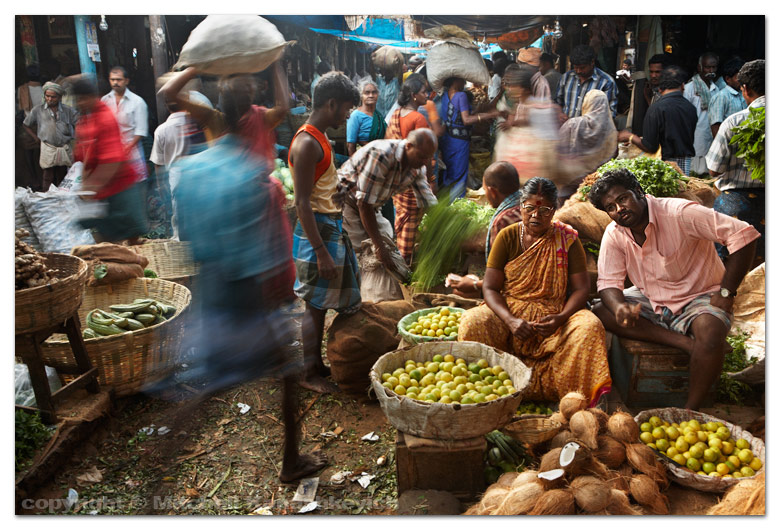
 Madurai is a fascinating city. My short time here would not do it any justice. However, I decided to at least have a peek at it, rather than to simply pass it by. Parts of the city are particularly photogenic. The fruit and vegetable market inside the city is as bustling and challenging to photograph as the fish market in Kollam. I came to this place every morning, I suppose more to absorb the atmosphere than to create any compelling images. Later in the mornings I'd go to the temple, the most famous temple in all of south India and arguably the finest example of Dravidian architecture - the Sri Menakshi. To my huge disappointment there was restoration work being done to the Sri Menakshi during my visit. Its giant, elaborately decorated towers were covered with faded, dry palm leaves. I was left only with post card images of what it looked like and my imagination of how it may look after the restoration.
Madurai is a fascinating city. My short time here would not do it any justice. However, I decided to at least have a peek at it, rather than to simply pass it by. Parts of the city are particularly photogenic. The fruit and vegetable market inside the city is as bustling and challenging to photograph as the fish market in Kollam. I came to this place every morning, I suppose more to absorb the atmosphere than to create any compelling images. Later in the mornings I'd go to the temple, the most famous temple in all of south India and arguably the finest example of Dravidian architecture - the Sri Menakshi. To my huge disappointment there was restoration work being done to the Sri Menakshi during my visit. Its giant, elaborately decorated towers were covered with faded, dry palm leaves. I was left only with post card images of what it looked like and my imagination of how it may look after the restoration.
 Thankfully the inside of the vast temple grounds was very much intact and buzzing with religious activity. I have a strange feeling in Hindu temples; it is as if I am both - a complete alien and totally at home there. All the rituals, the hundreds queuing up for darshan (blessing) or prashad (blessed food) and bowing to the Gods carved out of stone; on the surface none of it makes much sense to someone like me. I'm not religious by any stretch of the imagination, in fact I'd say I'm anti-religious at times, but the essence behind every religion is very human and when I think of that, I, as a human being can connect with it. I feel that behind the multitude of layers, the rituals at Hindu temples or for that matter any sites of worship, stand two universal factors - misery and hope. Misery and hope go hand in hand in and around the Sri Menakshi Temple. A poor farmer's family spends the night on the pavement by a make-shift fire, a deformed man begs for money, a newly-wed couple makes an offering and the fat businessman who has "made it" bows down to the Shiva statue - there is a degree of hope and misery that drives all of these people. They plead for a better life, money, happiness, forgiveness and they all hope that they will be heard by the divine. There isn't an individual in the world that doesn't suffer or hope. And as for surrendering to the divine, if it's not God that a person looks to, it's love, work, alcohol, drugs. The essence remains the same, only the layers around it change. Knowing this makes me feel at ease about the blanks in my knowledge of Hinduism. I can fill in those blanks. What makes me comfortable is the fact that those in the temple are humans, before they are anything else. Their actions are a manifestation of their cultural upbringing, but these actions are driven by the same misery and hope that I and every other human feel.
We spent three days in Madurai. Our next stop is Bangalore. How we have to get there is another story.
Thankfully the inside of the vast temple grounds was very much intact and buzzing with religious activity. I have a strange feeling in Hindu temples; it is as if I am both - a complete alien and totally at home there. All the rituals, the hundreds queuing up for darshan (blessing) or prashad (blessed food) and bowing to the Gods carved out of stone; on the surface none of it makes much sense to someone like me. I'm not religious by any stretch of the imagination, in fact I'd say I'm anti-religious at times, but the essence behind every religion is very human and when I think of that, I, as a human being can connect with it. I feel that behind the multitude of layers, the rituals at Hindu temples or for that matter any sites of worship, stand two universal factors - misery and hope. Misery and hope go hand in hand in and around the Sri Menakshi Temple. A poor farmer's family spends the night on the pavement by a make-shift fire, a deformed man begs for money, a newly-wed couple makes an offering and the fat businessman who has "made it" bows down to the Shiva statue - there is a degree of hope and misery that drives all of these people. They plead for a better life, money, happiness, forgiveness and they all hope that they will be heard by the divine. There isn't an individual in the world that doesn't suffer or hope. And as for surrendering to the divine, if it's not God that a person looks to, it's love, work, alcohol, drugs. The essence remains the same, only the layers around it change. Knowing this makes me feel at ease about the blanks in my knowledge of Hinduism. I can fill in those blanks. What makes me comfortable is the fact that those in the temple are humans, before they are anything else. Their actions are a manifestation of their cultural upbringing, but these actions are driven by the same misery and hope that I and every other human feel.
We spent three days in Madurai. Our next stop is Bangalore. How we have to get there is another story.
At the edge of the world...or India.
 Kanyakumari is where India ends. It's as far south as you can go before you face nothing but endless water. I thought it a rather romantic idea to reach "The world's edge", to ride all the way to Kanyakumari on the motorcycle, and finally we have made it. I've got no idea exactly how many kilometers this place is from Rajasthan, where we began the journey, but mine and Tanya's bottoms say "It's pretty damn far!"
Kanyakumari is where India ends. It's as far south as you can go before you face nothing but endless water. I thought it a rather romantic idea to reach "The world's edge", to ride all the way to Kanyakumari on the motorcycle, and finally we have made it. I've got no idea exactly how many kilometers this place is from Rajasthan, where we began the journey, but mine and Tanya's bottoms say "It's pretty damn far!"
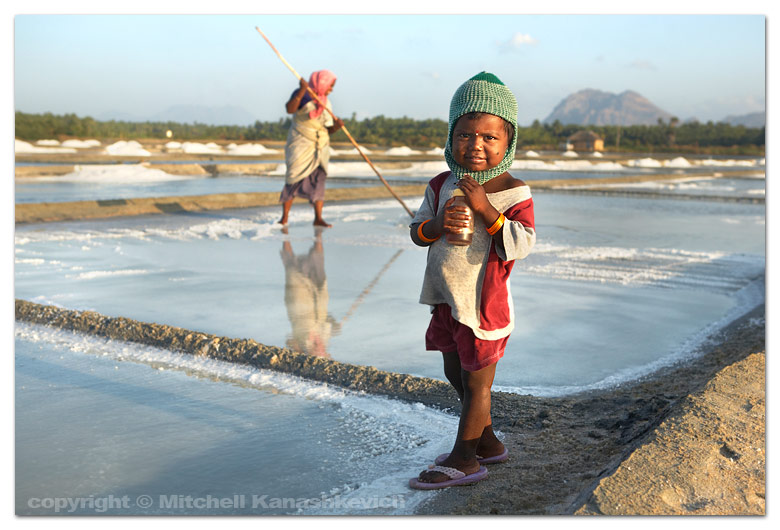 Besides being a major place of religious pilgrimage, the biggest attractions of Kanyakumari are sunrise and sunset watching. Because the town is located on a narrow tip, right at the very bottom of India, it is possible to see the sun rise and set over the sea, and you only have to walk a couple of hundred meters from one spot to the other. As a result every morning there are hordes of mostly local tourists who line up to watch the sunrise and to photograph each other in silly poses at the sunrise point. In the evenings the same deal is repeated at sunset point. The whole area around those two spots is kitschy beyond description and rather irritating, due to the countless numbers of people trying to sell you tourist junk at every corner. But should you venture outside of the tourist zone, you will see a very different side of this region.
Besides being a major place of religious pilgrimage, the biggest attractions of Kanyakumari are sunrise and sunset watching. Because the town is located on a narrow tip, right at the very bottom of India, it is possible to see the sun rise and set over the sea, and you only have to walk a couple of hundred meters from one spot to the other. As a result every morning there are hordes of mostly local tourists who line up to watch the sunrise and to photograph each other in silly poses at the sunrise point. In the evenings the same deal is repeated at sunset point. The whole area around those two spots is kitschy beyond description and rather irritating, due to the countless numbers of people trying to sell you tourist junk at every corner. But should you venture outside of the tourist zone, you will see a very different side of this region.
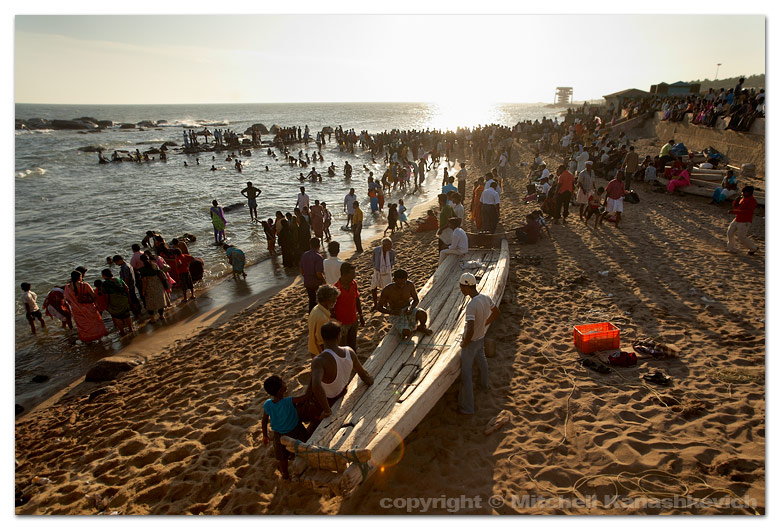 One day we decided to ride along the coastline road that headed north-east from the "Edge of India". The whole way felt strange, fascinating and edge-of-the-worldly. Sparsely populated fishing villages, government housing, likely erected after the 2004 Tsunami and churches, in almost every village, they seemed so out of place due to their grand design and enormous size that dwarfed anything we had seen in Goa.
Without a map, a description of the area in any guidebook or any useful information from the tourist office the ride was exploration for the sake of exploring, a journey into the unknown. There were no demands for pens, chocolates or money along the way. It was beautiful "unadulterated" India. When we got back into town I was faced with the same dilemma that I have encountered a few times on this trip - a bit over three months to cover a relatively small part of India, but ultimately so little time.
We have less than ten days until we fly back to Sydney and so the journey towards Mumbai must begin soon. The next stop is Madurai, we ride from there to Bangalore and travel by train for the remaining days.
One day we decided to ride along the coastline road that headed north-east from the "Edge of India". The whole way felt strange, fascinating and edge-of-the-worldly. Sparsely populated fishing villages, government housing, likely erected after the 2004 Tsunami and churches, in almost every village, they seemed so out of place due to their grand design and enormous size that dwarfed anything we had seen in Goa.
Without a map, a description of the area in any guidebook or any useful information from the tourist office the ride was exploration for the sake of exploring, a journey into the unknown. There were no demands for pens, chocolates or money along the way. It was beautiful "unadulterated" India. When we got back into town I was faced with the same dilemma that I have encountered a few times on this trip - a bit over three months to cover a relatively small part of India, but ultimately so little time.
We have less than ten days until we fly back to Sydney and so the journey towards Mumbai must begin soon. The next stop is Madurai, we ride from there to Bangalore and travel by train for the remaining days.
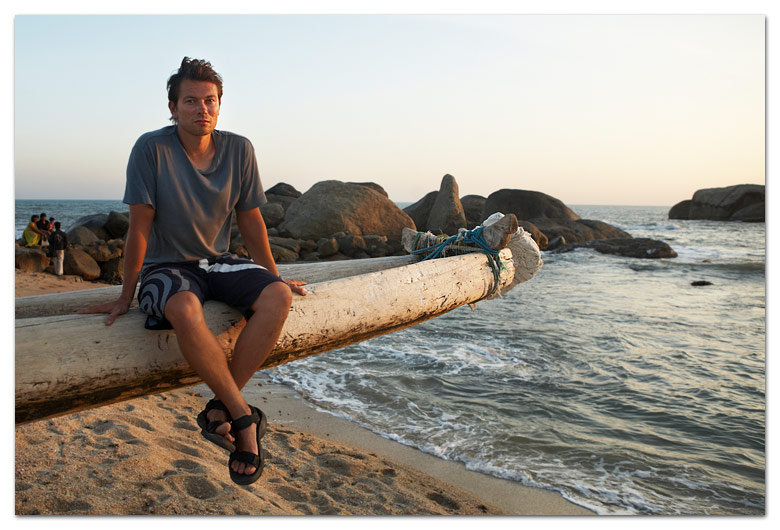 Photos:
Top and middle: A child of a salt worker, patiently waiting for mother with his juice bottle. I photographed this at a salt making field (or whatever you would call a place that makes salt). We came across it while doing our little exploration trip. We came back a few times, wanting to see the mother and son again, but they were no longer there.
Second from the bottom: Tourists at sunset point.
Bottom: This one's for my mum. She hasn't seen her son in over four months. Yeah, it's kinda cheesy, but till I get back I guess a photo is all she can see of me.
Photos:
Top and middle: A child of a salt worker, patiently waiting for mother with his juice bottle. I photographed this at a salt making field (or whatever you would call a place that makes salt). We came across it while doing our little exploration trip. We came back a few times, wanting to see the mother and son again, but they were no longer there.
Second from the bottom: Tourists at sunset point.
Bottom: This one's for my mum. She hasn't seen her son in over four months. Yeah, it's kinda cheesy, but till I get back I guess a photo is all she can see of me.
Last Days in Kerala
 Let me paint you a mental picture - it's early in the morning on Munro Island, the village street is still quite, golden light shines on the greenery that's abundant everywhere you look and a water canal flows to the right of the road. By the same road is a group of little schoolboys, one of them is urinating, facing away from the road. Suddenly he notices Tanya and I pass by on the motorcycle and turns around, without zipping up his pants or finishing his 'business' he screams "Hello! School Pen!
Let me paint you a mental picture - it's early in the morning on Munro Island, the village street is still quite, golden light shines on the greenery that's abundant everywhere you look and a water canal flows to the right of the road. By the same road is a group of little schoolboys, one of them is urinating, facing away from the road. Suddenly he notices Tanya and I pass by on the motorcycle and turns around, without zipping up his pants or finishing his 'business' he screams "Hello! School Pen!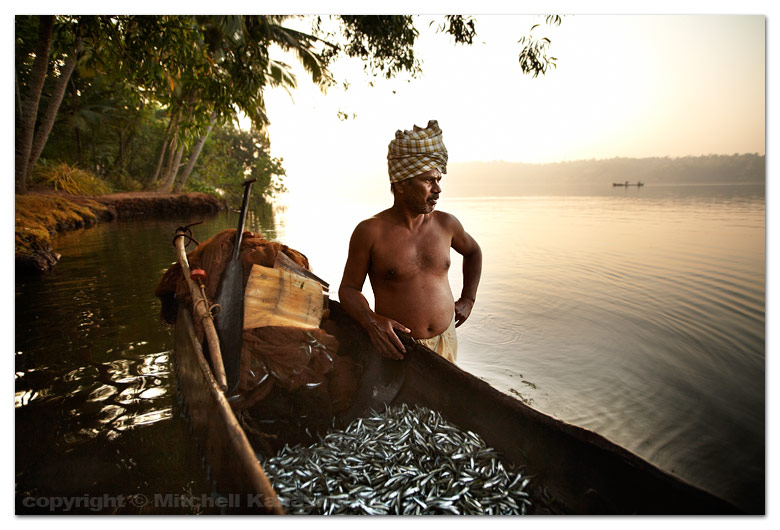 We decided to spend our last few days in Kerala photographing things that you can only see in this state - the backwaters, the boatmen, the sand collectors (see image below). Munro Island was a pretty ideal location. It is beautiful, that is no secret and it's that beauty that attracts countless houseboat tourists and spreads the "Hello, school-pen, chocolate, rupee!" disease among the island's population.The incident described above is ridiculous and that's what I think of the whole thing, it's ridiculous and stupid beyond words. Even the adults murmured those dreadful words, encouraging those I photographed to demand a pen, chocolate or money for being photographed. To the defense of the people in my images, none of them asked me for anything. They really were as dignified as I hope they look in the images.
We decided to spend our last few days in Kerala photographing things that you can only see in this state - the backwaters, the boatmen, the sand collectors (see image below). Munro Island was a pretty ideal location. It is beautiful, that is no secret and it's that beauty that attracts countless houseboat tourists and spreads the "Hello, school-pen, chocolate, rupee!" disease among the island's population.The incident described above is ridiculous and that's what I think of the whole thing, it's ridiculous and stupid beyond words. Even the adults murmured those dreadful words, encouraging those I photographed to demand a pen, chocolate or money for being photographed. To the defense of the people in my images, none of them asked me for anything. They really were as dignified as I hope they look in the images. The negatives aside Munro Island is a special part of Kerala that is hard to resist. Here you can still see people living unhurried, traditional lives. There are no roads through the middle of the island, instead the canals are the island's highways and the only practical way to get from place to place, you constantly see men and occasionally women getting around in small boats. Our highlight on the island was hiring a boat from a village family and going about by ourselves. Judging by the astonished looks on local people's faces it seems that no foreign visitors ever do this, but we loved exploring and learning this particular boat riding technique. In Kerala's backwaters people don't usually paddle with oars, as the waters are rather shallow they have a long piece of bamboo which is used to push off from the ground under water. We got one oar and one long piece of bamboo. After some trial and error Tanya took over the role of the navigator and used the piece of bamboo to push off and change direction when needed. I paddled with the oar and looked for potential photos.The atmosphere on Munro Island is very peaceful and laid back, at least it's like that along the canals. Different story near the roads, where I saw and heard something that absolutely shocked, puzzled and horrified me - loudspeakers on trees and electricity poles. Every day the loudspeakers blasted out some insane tune, so loud that it crackled from distortion. Why would anyone want this in "paradise"? I guess, it's just another Kerala mystery.
The negatives aside Munro Island is a special part of Kerala that is hard to resist. Here you can still see people living unhurried, traditional lives. There are no roads through the middle of the island, instead the canals are the island's highways and the only practical way to get from place to place, you constantly see men and occasionally women getting around in small boats. Our highlight on the island was hiring a boat from a village family and going about by ourselves. Judging by the astonished looks on local people's faces it seems that no foreign visitors ever do this, but we loved exploring and learning this particular boat riding technique. In Kerala's backwaters people don't usually paddle with oars, as the waters are rather shallow they have a long piece of bamboo which is used to push off from the ground under water. We got one oar and one long piece of bamboo. After some trial and error Tanya took over the role of the navigator and used the piece of bamboo to push off and change direction when needed. I paddled with the oar and looked for potential photos.The atmosphere on Munro Island is very peaceful and laid back, at least it's like that along the canals. Different story near the roads, where I saw and heard something that absolutely shocked, puzzled and horrified me - loudspeakers on trees and electricity poles. Every day the loudspeakers blasted out some insane tune, so loud that it crackled from distortion. Why would anyone want this in "paradise"? I guess, it's just another Kerala mystery.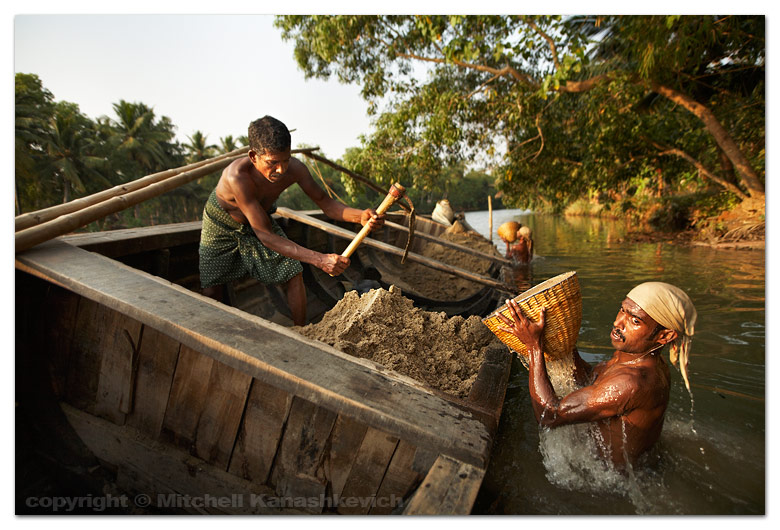
 Alumkadavu, the magical place by the lake which I wrote about in one of my past posts was our last stop in Kerala. We liked it so much the first time that we decided to go back for a day, but, well, the magic was sucked out of it this time around. Why? LOUDSPEAKERS! Thankfully they weren't on trees, but what we heard was bad enough - 24 hours of temple music so loud that we could hear it as if it was at full volume in our own room, and it was actually on the other side of the lake. We came back to this village to absorb the peaceful vibes and to get some photos of people fishing on the lake. Neither happened, but I did get a few images of one of the "public ferry" boatman over a few rides with him (image at the top of the post). He was a nice guy and a hard worker, who didn't mind me snapping away and occasionally rocking the boat, he was too agile to care. He'd walk right along the edge from the font to the back of the boat and vice-versa.
Alumkadavu, the magical place by the lake which I wrote about in one of my past posts was our last stop in Kerala. We liked it so much the first time that we decided to go back for a day, but, well, the magic was sucked out of it this time around. Why? LOUDSPEAKERS! Thankfully they weren't on trees, but what we heard was bad enough - 24 hours of temple music so loud that we could hear it as if it was at full volume in our own room, and it was actually on the other side of the lake. We came back to this village to absorb the peaceful vibes and to get some photos of people fishing on the lake. Neither happened, but I did get a few images of one of the "public ferry" boatman over a few rides with him (image at the top of the post). He was a nice guy and a hard worker, who didn't mind me snapping away and occasionally rocking the boat, he was too agile to care. He'd walk right along the edge from the font to the back of the boat and vice-versa.
I am now writing from Tamil Nadu, a state that shares its' border with Kerala. So, "What will I remember about God's Own Country?". Well, it is remarkably beautiful and full of colorful, ancient traditions that are very much a part of people's lives today. These people are mostly gentle and kind, and dignified, but I guess I'll hear "School-pen, chocolate, rupee!" in my nightmares for some time to come, probably accompanied by temple music playing at full blast from a loudspeaker on a tree.
Photos:
Top to bottom:
- Boatman of a public "ferry", Alumkadavu
- A fisherman with his morning catch at a small fish market, near Munro Island
- Coconut loading. We were riding around Alumkadavu at sunset, looking for something interesting to photograph and found these men loading coconuts into a truck. They were a bit surprised, in a pleasant way, the man on the right opened up one of the coconuts and gifted it to me.
- Sand collecting, Munro Island. Seems like this is a big industry in Kerala. I saw these guys working while we were on our way back from our boat ride. You can't really get a decent shot from the boat, nor can you get it from the shore, so I went chest deep into the water. The workers cracked up with laughter, but continued their job. I shot a few frames. The next image is from their boat, it's worth exploring different angles if you have a chance.
The Little Tea-Shack at the end of "Beach Road"
 During one of our days in Kollam we wanted to find out where the "Beach Road" led to, so we decided to ride it south, as long as it followed the shoreline. After passing a couple of fishing villages and beaches we came to a corner, there the road branched off inland. A small shack stood on that corner, smoke was coming out of its windows and people with tea glasses stood outside. Having come to the end of the "Beach Road" and not having any desire to head back to our room, we got off the motorbike and went into the smoky shack. Inside I found one of my favorite photographic places in Kerala.
During one of our days in Kollam we wanted to find out where the "Beach Road" led to, so we decided to ride it south, as long as it followed the shoreline. After passing a couple of fishing villages and beaches we came to a corner, there the road branched off inland. A small shack stood on that corner, smoke was coming out of its windows and people with tea glasses stood outside. Having come to the end of the "Beach Road" and not having any desire to head back to our room, we got off the motorbike and went into the smoky shack. Inside I found one of my favorite photographic places in Kerala.
The shack was a small eatery that served basic food and tea to fishermen and other village folk. There are countless numbers of such tea-shacks all around India, but this particular one caught my eye. The blue wall, with everything on it was like a tapestry that told a short story about the place and the people who live there. Anyone who's been to South Kerala will recognize the symbols of the state in the photograph at the top of the post. The 'subjects', the owners of the tea-shack - Manuel and Anitha Sebastian are husband and wife; they are Catholic Indians, of whom there seems to be a lot along the coastline of South Kerala.
I made three visits to the tea-shack; I would go there later in the morning, after photographing fishermen by the sea. The top image was taken during my last time there, in the first two I couldn't get the couple together; one or the other would always be busy with customers or in the kitchen. Despite not really being able to speak to each other, sign language and some familiar words helped me explain that I wanted to take some photos. Manuel and Anitha found me rather amusing. They thought it was really funny, or crazy (in which case they masked shock with laughter) when I photographed them through the window which expelled the smoke from their cooking. It was one of these cases where photography seemed to brighten up people's mundane, daily routine and they gladly welcomed me into their lives, for a brief moment in time.
Customers kept coming in and out of the shack. After it was known what I was doing inside, it seemed that some came with the hopes that they too would be photographed. Here are some more images from the "Little Tea-Shack at the end of the Beach Road".
 One early Sunday morning I realized that no one goes to work on Sundays, no fishermen would be going out to the sea. Since I had already gotten up early I headed off to the tea-shack in hopes of catching some customers having tea there. This gentleman had just come from church and was reading the news with a glass of tea in his hand. I asked if I could photograph him, he smiled and agreed. Initially he stared directly into the camera, but I asked him to look a little to the side, to make the portrait more casual.
One early Sunday morning I realized that no one goes to work on Sundays, no fishermen would be going out to the sea. Since I had already gotten up early I headed off to the tea-shack in hopes of catching some customers having tea there. This gentleman had just come from church and was reading the news with a glass of tea in his hand. I asked if I could photograph him, he smiled and agreed. Initially he stared directly into the camera, but I asked him to look a little to the side, to make the portrait more casual.
 Anitha cooking parothas, while Manuel prepares them. Manuel managed to communicate to me that everyday they go through 400 parothas, no small task for a tiny place like theirs. This was taken through the window that sporadically expelled smoke from the cooking fire.
Anitha cooking parothas, while Manuel prepares them. Manuel managed to communicate to me that everyday they go through 400 parothas, no small task for a tiny place like theirs. This was taken through the window that sporadically expelled smoke from the cooking fire.
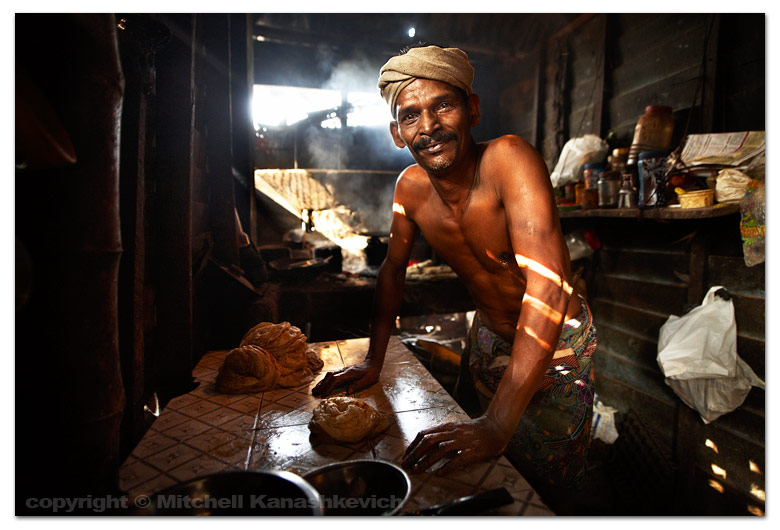 Manuel pauses while making parothas.
Manuel pauses while making parothas.
The rest of the images are pretty self explanatory. All were taken with natural, light that came from the sides, through the windows.
These are the Good Times
 At last we have reached a place which validates our reasons for coming to Kerala - North Travancore. This will be the last of what we see of "God's Own Country" before we move on, and we'll certainly be left with a nice impression. The region represents the Kerala which I had hoped existed, but only had glances of so far - North Travancore has fishing settlements and harbors, quiet villages along the backwaters and in the city of Kollam there is even an atmospheric, bustling fruit and spice market. I have encountered all that I had hoped. The region is a paradise for a photographer, or at least a photographer with a motorcycle, as the places of photographic interest are not exactly within walking distance of each other.
At last we have reached a place which validates our reasons for coming to Kerala - North Travancore. This will be the last of what we see of "God's Own Country" before we move on, and we'll certainly be left with a nice impression. The region represents the Kerala which I had hoped existed, but only had glances of so far - North Travancore has fishing settlements and harbors, quiet villages along the backwaters and in the city of Kollam there is even an atmospheric, bustling fruit and spice market. I have encountered all that I had hoped. The region is a paradise for a photographer, or at least a photographer with a motorcycle, as the places of photographic interest are not exactly within walking distance of each other.
The Photos
One of my biggest photographic obsessions is fishing villages and fishing harbours. I love of the sea and seafood, and sometimes I not so secretly wish for a lifestyle like the fishermen that are in my images. I am fascinated by these men, they're brave, tough and while often crude, they are always full of life and humor.
In Kollam, the biggest city of North Travancore I finally satisfied my last for all photographic things fish-related. Along the shoreline North and South of Kollam Beach there are a few picturesque fishing settlements. Now, picturesque doesn't mean that they're ideal places to hang out. The stench of fish fills the air, rubbish is everywhere and in the morning, walking along the shoreline is like walking through a minefield. Let me explain - the fishermen, like most of their fellow countrymen make crapping one of the first priorities to begin the day, but unlike most of their fellow countrymen they take a crap directly on the beach. I'm sorry for devoting attention to this, but the crap really is a big part of the experience of a morning walk along the shore - one wrong move, and you're in trouble.
While shooting the image at the top of the post I was confronted with a rather strange predicament. As usual I had to look under my feet to avoid the "mines" on my way towards the fishermen, but then as I went into the water, Tanya noticed something floating and being thrown back to shore. It was a piece of crap that simply wouldn't agree to be taken away by the sea and it seemed as if it was stalking me. Now I had two things to worry about - the waves that could damage my camera and the floating crap that could leave me with a psychological scar. In-between crouching for the shot, standing up when the waves came and dodging the piece of crap I managed to get a few images, this is one of them.
They say that this fishing technique is as old as time itself. The net is taken out from the shore, it's spread by a few boats, sometimes over quite a distance. When everything is ready, the boats signal to two groups of men on shore, one group at each end of the net. The groups begin to pull and start moving sideways towards each other, to form a circle with the net. When this is done, the pulling gets more intense, everything within the circle is captured and as the net makes its way towards the shore, the pulling becomes more difficult. More men join in (this shot was taken towards the end). The final moments are quite amazing. The fishermen chant to encourage each other, their voices join into a melody that resembles a primeval war-cry, the tempo gets faster, as the catch approaches the shore, the volume rises. The full net is carried onto the beach, the fish are sorted and distributed among the families of the fishermen. If the catch is good, some big fish will have made their way into the net, it is usually sold and the money is divided. On this occasion the catch was nothing more than a load of tiny silver fish, which will only be used for curries or dried under the sun. A few disappointed looks, a few sighs, but this is just another day at work for the fishermen. The net is packed up, washed in the ocean and spread out to dry till next day.
 Men unloading sharks from a boat at Neendakara Fishing Harbour. This was probably one of the most, if not the most bustling fishing harbor that I had ever been to. You'd think that it would make an ideal photographic spot, which it can, but not without difficulties. The light was great, it was early morning, but there was just way too much happening. You really had to decide what you wanted to focus on or you'd shoot a lot of everything and nothing really worthwhile.
Men unloading sharks from a boat at Neendakara Fishing Harbour. This was probably one of the most, if not the most bustling fishing harbor that I had ever been to. You'd think that it would make an ideal photographic spot, which it can, but not without difficulties. The light was great, it was early morning, but there was just way too much happening. You really had to decide what you wanted to focus on or you'd shoot a lot of everything and nothing really worthwhile.
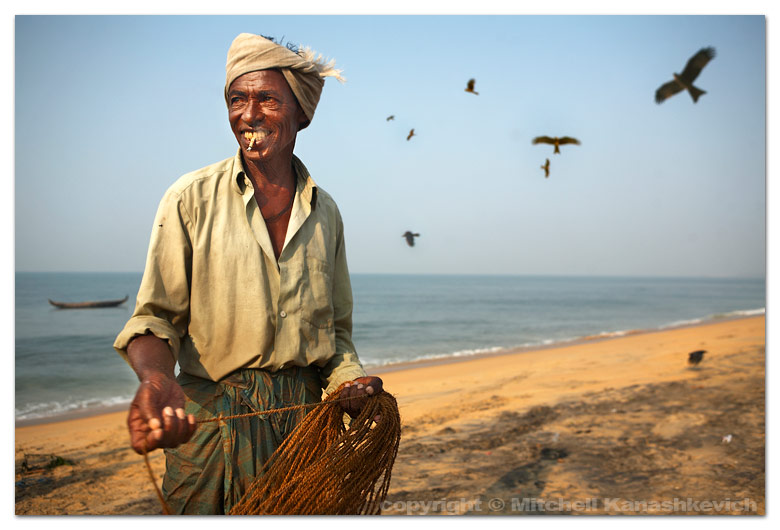 South of Kollam Beach - An elderly fisherman packing up the net, while crows and eagles circle in search of leftovers.
South of Kollam Beach - An elderly fisherman packing up the net, while crows and eagles circle in search of leftovers.

 Top: Old fisherman pulling in the catch, South of Kollam Beach.
Top: Old fisherman pulling in the catch, South of Kollam Beach.
Middle: Fishermen push the boat out to sea, as the sun is about to rise, South of Kollam Beach.
Bottom: A fisherman and his wife in a Catholic settlement North of Kollam Beach (most of the fishermen in this area seem to be Catholics).

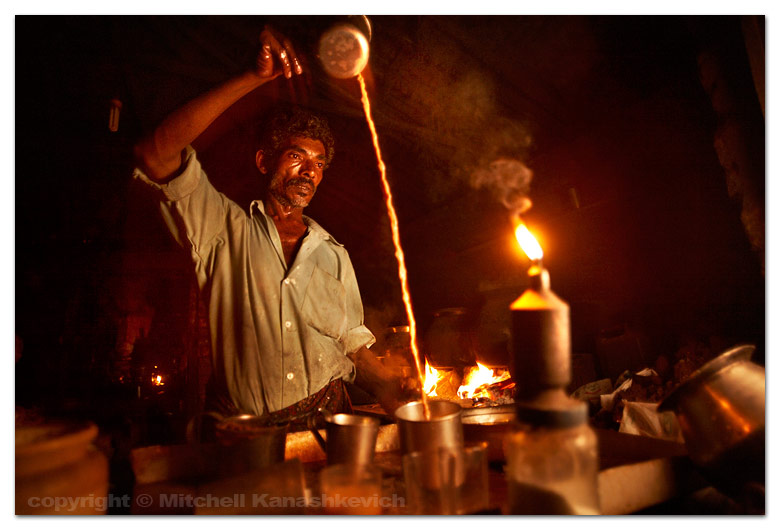 Top: Namboodiri caste (Keralan priest) man and boy atop a decorated elephant during Gaja Mela, Rural Travancore.
Top: Namboodiri caste (Keralan priest) man and boy atop a decorated elephant during Gaja Mela, Rural Travancore.
Bottom: Couldn't resist taking a shot of this tea maker at Gaja mela. There was a power cut (very usual all over Kerala) and the only light came from the kerosene lamp and the fire, making his little tea-hop, seem rather mysterious. I shot a few frames of the man and had a couple of teas while doing it. When I asked how much for the tea, he waived his hands to sign "don't worry about it". I insisted, but he repeated the same thing. That's the generosity and hospitality I have come to love in India.
Going South or "Chocolate, school-pen, hello-ten-rupees!"
 Whenever tourism hits a place in a developing country it seems to create the "chocolate, school-pen and hello-ten-rupees" (or whatever other currency) phenomenon. A mushrooming of expensive restaurants with rubbish food follows and then all the prices for regular services skyrocket. I really dislike the way tourism from the 'rich' world shapes the 'poor' world. The sort of interaction between the two breeds cynicism, and for a photographer of people cynicism is a very dangerous thing. What will your photograph say if your subject sees you as nothing more than a moneybag and you see the subject as someone who will do anything to get a piece of that money? I would never want to take photos that way.
Whenever tourism hits a place in a developing country it seems to create the "chocolate, school-pen and hello-ten-rupees" (or whatever other currency) phenomenon. A mushrooming of expensive restaurants with rubbish food follows and then all the prices for regular services skyrocket. I really dislike the way tourism from the 'rich' world shapes the 'poor' world. The sort of interaction between the two breeds cynicism, and for a photographer of people cynicism is a very dangerous thing. What will your photograph say if your subject sees you as nothing more than a moneybag and you see the subject as someone who will do anything to get a piece of that money? I would never want to take photos that way.
 Is tourism bad? I've got no answer to that. As far as what I’ve seen, the negative impact often outweighs any positives. Of course it ultimately depends on what your priorities are. If you'd like to have everything at the snap of your fingers because you have the money and you don't mind that your relationships with people in these so called "third world" countries are nothing more than transactions, then tourism has worked out well for you. If, however you want to genuinely experience a culture and not be confronted with a price-tag for a smile or a hello, well then you're really outta luck. Since I belong to the latter category I avoid tourist "hot-spots" like I'd avoid the plague. But it's impossible to avoid them completely, some are on your way, others lure you in with something you simply can't resist and then there are times when you think it won't be as bad as people say. My next couple of stops after Thrissur fell under a few of those categories. Cochin lured me in with the images I had seen of the Chinese fishing nets and tales about colorful colonial architecture. Allepey, dubbed the Venice of India was on the way, and the Venice thing sounded tempting.
Is tourism bad? I've got no answer to that. As far as what I’ve seen, the negative impact often outweighs any positives. Of course it ultimately depends on what your priorities are. If you'd like to have everything at the snap of your fingers because you have the money and you don't mind that your relationships with people in these so called "third world" countries are nothing more than transactions, then tourism has worked out well for you. If, however you want to genuinely experience a culture and not be confronted with a price-tag for a smile or a hello, well then you're really outta luck. Since I belong to the latter category I avoid tourist "hot-spots" like I'd avoid the plague. But it's impossible to avoid them completely, some are on your way, others lure you in with something you simply can't resist and then there are times when you think it won't be as bad as people say. My next couple of stops after Thrissur fell under a few of those categories. Cochin lured me in with the images I had seen of the Chinese fishing nets and tales about colorful colonial architecture. Allepey, dubbed the Venice of India was on the way, and the Venice thing sounded tempting.
 I probably romanticized Cochin like no other place in India and when you do that you set your self up for disappointment. But Cochin didn't really disappoint me as a visitor, it was in many ways what I had imagined, however this city did tease me and didn't give me what I wanted, photographically speaking. I only saw hints of what could have been, had the day of the week been right, had there not been a crowd of tourists photographing the same person I wanted to photograph, had the fishermen at the Chinese nets not tried to get money out of me for "allowing" me to see how they work. There are countless stories in that city and I'm sure that many are very photogenic, but having only a limited amount of time and only one life, you think; is there another place I'd rather be? And there are, quite many, so we moved on.
I probably romanticized Cochin like no other place in India and when you do that you set your self up for disappointment. But Cochin didn't really disappoint me as a visitor, it was in many ways what I had imagined, however this city did tease me and didn't give me what I wanted, photographically speaking. I only saw hints of what could have been, had the day of the week been right, had there not been a crowd of tourists photographing the same person I wanted to photograph, had the fishermen at the Chinese nets not tried to get money out of me for "allowing" me to see how they work. There are countless stories in that city and I'm sure that many are very photogenic, but having only a limited amount of time and only one life, you think; is there another place I'd rather be? And there are, quite many, so we moved on.
Allepey was our next stop. I heard that it was not that special from a few people I'd come across, but who could resist at least having a glance at "Venice of India". Having never actually been to Venice I don't know how Allepey measures up, but it was indeed not that special, as far as personal impressions go. The town did give me an introduction to the backwaters of Kerala that I had seen in so many photos and, in the surrounding areas I was given a dose of that real tourist-equals-moneybag welcome.
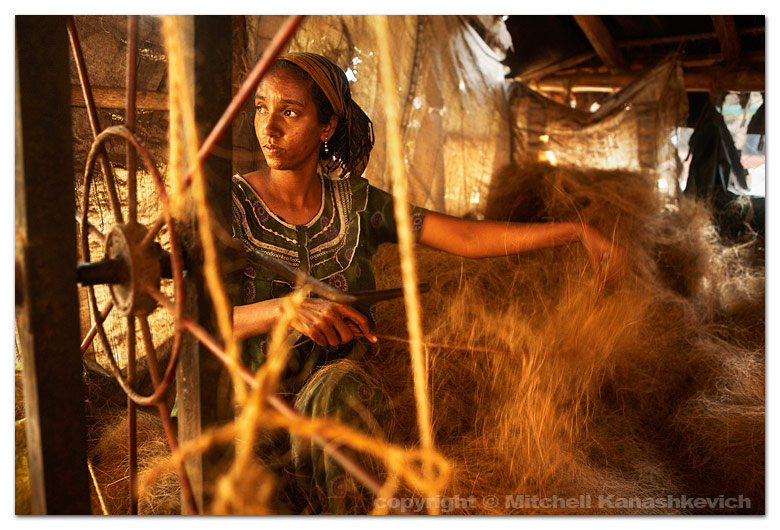 Paying three times the price for a supposedly traditional, yet crappy, small fish dishes at an eatery on an isolated island was inevitable. The next boat back was two hours away and the eatery was the only thing on the island. Getting knocked out by half a liter of "Tori" (a palm drink with an alcoholic effect) on the same island should have been expected by someone who can't remember when he had his last drink. The tori induced nap did prove to be practical, as the tiny portion of food left a lot of time to kill. The next day at nearby Marari beach we were briefly stalked by very cute little girls who demanded pens for a made-up school exam and after hearing a negative response kept nagging my wife,” Please open the bag! Please let me see what is inside your bag!" Oh, Kerala, God's Own Country!
Paying three times the price for a supposedly traditional, yet crappy, small fish dishes at an eatery on an isolated island was inevitable. The next boat back was two hours away and the eatery was the only thing on the island. Getting knocked out by half a liter of "Tori" (a palm drink with an alcoholic effect) on the same island should have been expected by someone who can't remember when he had his last drink. The tori induced nap did prove to be practical, as the tiny portion of food left a lot of time to kill. The next day at nearby Marari beach we were briefly stalked by very cute little girls who demanded pens for a made-up school exam and after hearing a negative response kept nagging my wife,” Please open the bag! Please let me see what is inside your bag!" Oh, Kerala, God's Own Country!
But just as our levels of cynicism peaked, there was an unexpected stop at what's at least pretty close to being a magical little village by the lake - Alumkadavu. The first house boat (those things that tourists pay big bucks to rent) was built in Alamkadavu, and unless I met an imposter, then I accidentally stumbled upon the gentleman who was in charge of making that very first boat. These houseboats are impressive and I really mean it when I say it. They range from small and basic to close to 30 meters long and luxurious. I'd really love one of these, if I have good enough fortune to afford it, which seems like I won't anytime too soon, since the price quoted to me was $110,000 Australian Dollars for a fully furnished, air conditioned boat. Still, one can dream.
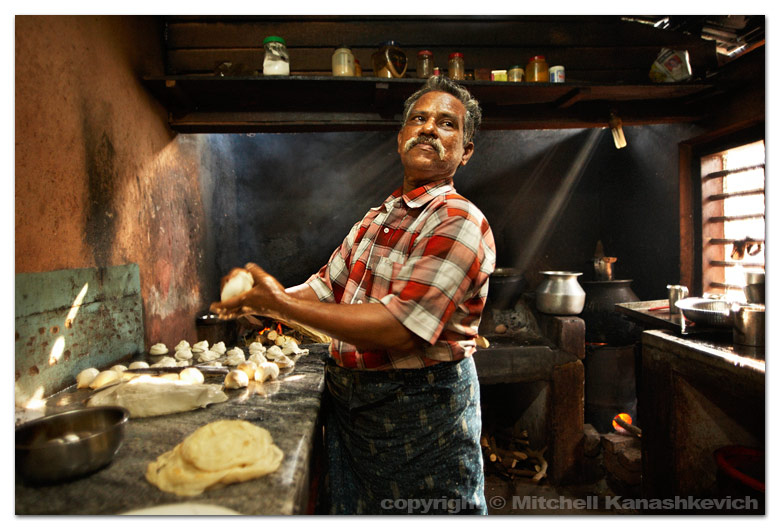 Alumkadavu is a tiny place, but it's famous for the 'vallom' (traditional boat) making at the same place where the first houseboat was built. It's also famous for a mini coir industry. Coir is the fiber of a dry coconut shell and it’s used for all sorts of things – insulation, mattresses and ropes.
Alumkadavu is a tiny place, but it's famous for the 'vallom' (traditional boat) making at the same place where the first houseboat was built. It's also famous for a mini coir industry. Coir is the fiber of a dry coconut shell and it’s used for all sorts of things – insulation, mattresses and ropes.
This brings me to the photos.
- The first image is of a small passenger boat. There are many of these boats navigating the Ashtamudi Lake and the surrounding canals.
- Men fixing a house boat. Apparently the boats can go eight years without needing any real maintenance. I was shown one boat which was 40 years old and in need of only some simple work.
- The view from our room in Alumkadavu - a house boat ready for departure, after spending the night by the nearby dock.
- A woman weaving a rope from coir.
- In Alumkadavu we had our food at a tiny local eatery and while we waited, I snapped a few frames of this man making parothas (a kind of pancake made up of thin layers of flour). While I photographed, the man kept saying "Good, good. One parotha. Thank you! Thank you!" I think that was about all he knew in English and he seemed to have lots of fun repeating it. Quirky character. Shot with a Sigma 20mm f1.8. I am loving this lens more and more. I hesitated getting it a couple of years back. Now I realize that I have only really used my Canon 24-70 f2.8 and the Sigma. Awesome lens! Not without imperfections, especially on a full frame camera, but at f1.8 and a relatively wide angle I can shoot stuff like this, which would be impossible otherwise.
Thrissur, Men in make up and using a flash on an elephant
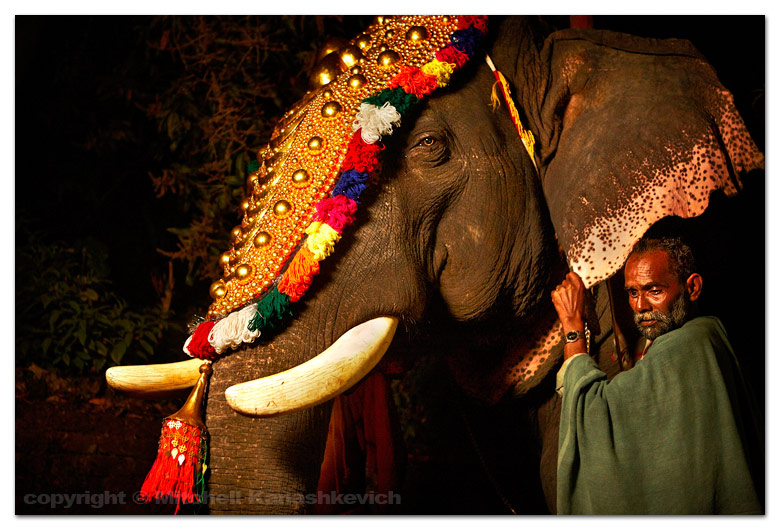 Thrissur - the cultural capital of Kerala, but just where do you begin to look for the culture? The Keralan towns I've come across are nothing like those of North India. The culture is not on display for you, you don't see turbaned men and traditionally dressed women with tribal tattoos walking the streets, as you do in Gujarat and Rajasthan, even in parts of Delhi. You have to dig a little deeper and the government run Thrissur tourist office was where I began digging. Good idea, although the tourism officers could not provide me with any practical information on where to find a festival or see Kathakali, they did direct me to the right person - Mr C.A. Menon, an charismatic, white-bearded gentlemen, somewhat eccentric and passionate about his culture and sharing it with anyone interested. As he sat on his antique reclining chair and I on his antique hanging bed, that used to belong to a Sultan, he spoke with excitement about a festival that was to take place at Guruvayoor, in an ancient Krishna temple 30 km form Thrissur. "This only happens once a year! You are very lucky! There will be elephants and an oracle who will get into a trance and throw colorful powder on himself! This is a ceremony to appease the Goddess Kali! It will be very special!" And so we rode Guruvayoor. The procession was in full swing, deafening music, even more deafening fire crackers, an oracle, who threw all sorts of things on himself - red powder, yellow powder, rice and various vegetables and there were elephants. They swayed from side to side and flapped their ears, looking rather sad and bored by the happenings. When all was finished, we didn't quite know what to make of everything. The next day Mr Menon sent us to see another procession, unfortunately it didn't leave a positive impression on us. The peak of this procession came when five elephants, some as big as a bus reached the temple. A few hundred men, drunk out of their minds, cheered, danced, sang and threw rice (a ritualistic thing) at the beasts. These elephants again swayed and flapped their ears to the mayhem around them, while the mahouts occasionally poked and hit them with thin sticks. I thought that at any minute I could witness a "When animals attack!" moment, but somehow these magnificent creatures kept their cool and didn't stomp on anyone.When I saw Mr Menon again, he asked me what I thought. I didn't have the heart to tell him, so I simply told him that the processions were an amazing spectacle, which they were. The same night Mr Menon gave us the location of a performance of an ancient form of Kathakali - a classical dance, which Kerala is world-famous for. The make-up part and the preparations were even more impressive than those I had witnessed at the Theyyam performances, but, and I don't mean to be an ass and seem like I am winging, after watching Theyaam - the somersaults, the fire-walking and the biting off of chicken heads, the subtle movements of Kathakali almost put me to sleep. Call me ignorant, uncultured, whatever - Kathakali just ain't that exciting. That doesn't mean that it's not photogenic, it is, extremely (which I think the images suggest) but the part behind the scenes is really the only thing that captivated me. Now, my opinions don't mean that what I've seen is not worth seeing, I guess it's just better not to expect any "magic".
Thrissur - the cultural capital of Kerala, but just where do you begin to look for the culture? The Keralan towns I've come across are nothing like those of North India. The culture is not on display for you, you don't see turbaned men and traditionally dressed women with tribal tattoos walking the streets, as you do in Gujarat and Rajasthan, even in parts of Delhi. You have to dig a little deeper and the government run Thrissur tourist office was where I began digging. Good idea, although the tourism officers could not provide me with any practical information on where to find a festival or see Kathakali, they did direct me to the right person - Mr C.A. Menon, an charismatic, white-bearded gentlemen, somewhat eccentric and passionate about his culture and sharing it with anyone interested. As he sat on his antique reclining chair and I on his antique hanging bed, that used to belong to a Sultan, he spoke with excitement about a festival that was to take place at Guruvayoor, in an ancient Krishna temple 30 km form Thrissur. "This only happens once a year! You are very lucky! There will be elephants and an oracle who will get into a trance and throw colorful powder on himself! This is a ceremony to appease the Goddess Kali! It will be very special!" And so we rode Guruvayoor. The procession was in full swing, deafening music, even more deafening fire crackers, an oracle, who threw all sorts of things on himself - red powder, yellow powder, rice and various vegetables and there were elephants. They swayed from side to side and flapped their ears, looking rather sad and bored by the happenings. When all was finished, we didn't quite know what to make of everything. The next day Mr Menon sent us to see another procession, unfortunately it didn't leave a positive impression on us. The peak of this procession came when five elephants, some as big as a bus reached the temple. A few hundred men, drunk out of their minds, cheered, danced, sang and threw rice (a ritualistic thing) at the beasts. These elephants again swayed and flapped their ears to the mayhem around them, while the mahouts occasionally poked and hit them with thin sticks. I thought that at any minute I could witness a "When animals attack!" moment, but somehow these magnificent creatures kept their cool and didn't stomp on anyone.When I saw Mr Menon again, he asked me what I thought. I didn't have the heart to tell him, so I simply told him that the processions were an amazing spectacle, which they were. The same night Mr Menon gave us the location of a performance of an ancient form of Kathakali - a classical dance, which Kerala is world-famous for. The make-up part and the preparations were even more impressive than those I had witnessed at the Theyyam performances, but, and I don't mean to be an ass and seem like I am winging, after watching Theyaam - the somersaults, the fire-walking and the biting off of chicken heads, the subtle movements of Kathakali almost put me to sleep. Call me ignorant, uncultured, whatever - Kathakali just ain't that exciting. That doesn't mean that it's not photogenic, it is, extremely (which I think the images suggest) but the part behind the scenes is really the only thing that captivated me. Now, my opinions don't mean that what I've seen is not worth seeing, I guess it's just better not to expect any "magic".
 The day after the Kathakali we would see another elephant procession. This one would take place at night and could potentially be more colorful and bright than the first two we had seen. It was, and we got to see the elephants getting dressed up for their "big moment". With the fear that the elephant could get pissed off at my dear wife when the flash in a soft-box sets off I asked the mahouts whether it was OK to use our little set-up while photographing, they said it was. We took a few shots, but we were feeling a little down. Tanya in particular wanted to see elephants and get close to them, and now when she did, they were in chains, swaying and flapping their ears, their tiny eyes looking sad and lifeless (perhaps that's just how they look). When the time for the ceremony came, the firecrackers exploded in a very loud collective bang, the music started and the elephants began to sway, feeling like we had seen all that we wanted to see it was time for us to leave.
The day after the Kathakali we would see another elephant procession. This one would take place at night and could potentially be more colorful and bright than the first two we had seen. It was, and we got to see the elephants getting dressed up for their "big moment". With the fear that the elephant could get pissed off at my dear wife when the flash in a soft-box sets off I asked the mahouts whether it was OK to use our little set-up while photographing, they said it was. We took a few shots, but we were feeling a little down. Tanya in particular wanted to see elephants and get close to them, and now when she did, they were in chains, swaying and flapping their ears, their tiny eyes looking sad and lifeless (perhaps that's just how they look). When the time for the ceremony came, the firecrackers exploded in a very loud collective bang, the music started and the elephants began to sway, feeling like we had seen all that we wanted to see it was time for us to leave.

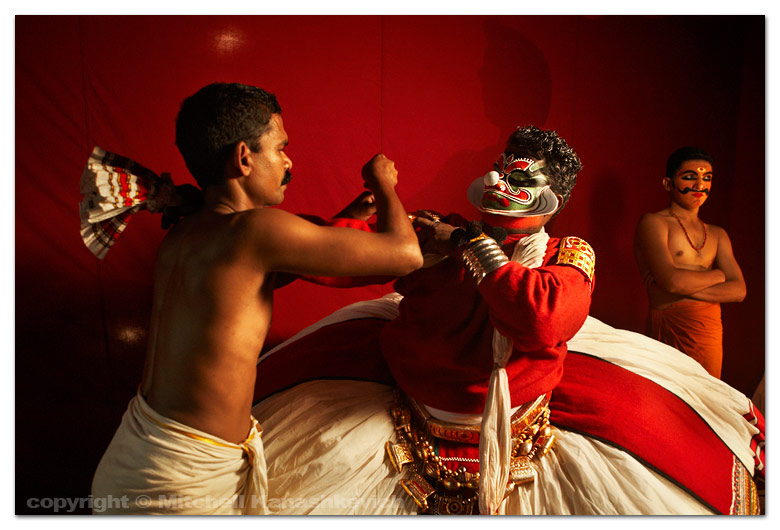 My stay at Thrissur wasn't disappointing, it just wasn't amazing. There was even a bit of "magic" in a place that I discovered accidentally - a Vedic school, in a 500-year-old building. Here thirty children spend most of their days chanting Vedas. From my understanding Vedas are Hindu scriptures that contain all sorts of wisdom. The children that come here belong to a particular cast of Keralan Brahmins, which is responsible for chanting the Vedas, like hymns, during various religious functions. This part of the Hindu culture was on the verge of extinction, but it seems that in the past decade the parents' interest to send their children to the school and spend four years learning how to chant has been renewed. One of the teachers explained: "Eight to twelve is the crucial age, if the Vedas and the way to chant them are imprinted in the boys' minds at this stage of their lives, they will never forget. My Guru learned to chant when he was a young boy like them, then he stopped for fifty years. After retiring he returned to the temple where he learned as a child and with a little practice it all came back to him." The amazing thing is that the chants can last for an entire day and nothing is written down. The words, along with countless tones are memorized, and it has been like that for as long as anyone can remember. It was hard to get any detailed explanation of what the whole purpose of the chanting was, but the scene was otherworldly. The sound of the chanting and the sight of young students in traditional dhotis against the ancient, weathered building made you feel like you are in a totally a different time.
My stay at Thrissur wasn't disappointing, it just wasn't amazing. There was even a bit of "magic" in a place that I discovered accidentally - a Vedic school, in a 500-year-old building. Here thirty children spend most of their days chanting Vedas. From my understanding Vedas are Hindu scriptures that contain all sorts of wisdom. The children that come here belong to a particular cast of Keralan Brahmins, which is responsible for chanting the Vedas, like hymns, during various religious functions. This part of the Hindu culture was on the verge of extinction, but it seems that in the past decade the parents' interest to send their children to the school and spend four years learning how to chant has been renewed. One of the teachers explained: "Eight to twelve is the crucial age, if the Vedas and the way to chant them are imprinted in the boys' minds at this stage of their lives, they will never forget. My Guru learned to chant when he was a young boy like them, then he stopped for fifty years. After retiring he returned to the temple where he learned as a child and with a little practice it all came back to him." The amazing thing is that the chants can last for an entire day and nothing is written down. The words, along with countless tones are memorized, and it has been like that for as long as anyone can remember. It was hard to get any detailed explanation of what the whole purpose of the chanting was, but the scene was otherworldly. The sound of the chanting and the sight of young students in traditional dhotis against the ancient, weathered building made you feel like you are in a totally a different time.
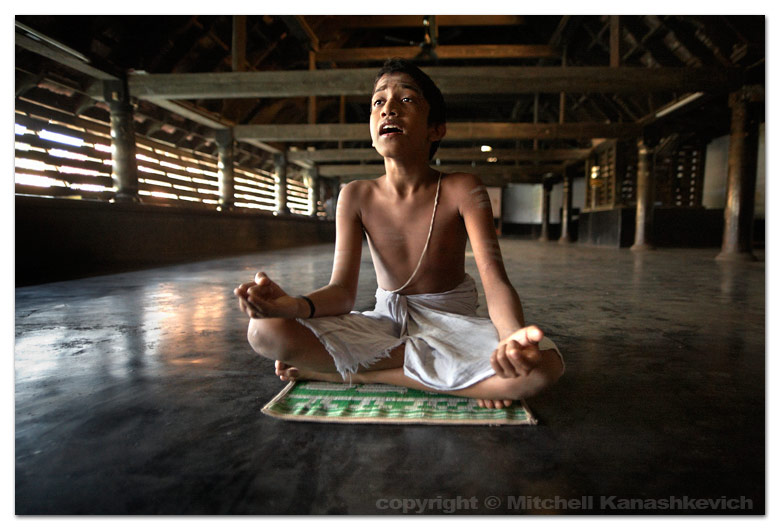
 Photos:
From top to bottom: A temple elephant in his costume and his mahout (elephant carer, trainer). This is one of the images I shot with a flash. Same deal as usual - Tanya holding the flash in a softbox on the side.
A somewhat cliched shot of a Kathakali artist looking in the mirror as he puts on make up. I tried to make this image better than anything I'd seen in the past with the help of the flash set-up. Here, I got Tanya to stand near a light-bulb which was illuminating everything with a yellowish light. We used a gel to warm up the flash and placed it so that the flash light would come from the same direction as the light from the light-bulb.This resulted in matching light which was more intense, thus I could use a lower ISO and a higher shutter speed.
More make-up. Same gel, but the flash is slightly moved away from the light-bulb to illuminate more of the artist's face (in make up).
Last preparations - the Kathakali team is putting the final parts of the costume on the artist. I wanted to have the artist's face illuminated, but I also wanted to have those shadows in the back. The flash was moved to the far left side of the light-bulb. Result - light is coming from both sides, more intense from the left.
A student chanting. He was trying very hard and grimacing all the time.
Bottom: A group of young students chanting.
The chanting images are shot only with the available light, which there was really not much of. I tried a few later with a flash, but this was one of the situations where you either shoot in natural light or have at least two flash units to better simulate this light, otherwise you simply kill the atmosphere.
Photos:
From top to bottom: A temple elephant in his costume and his mahout (elephant carer, trainer). This is one of the images I shot with a flash. Same deal as usual - Tanya holding the flash in a softbox on the side.
A somewhat cliched shot of a Kathakali artist looking in the mirror as he puts on make up. I tried to make this image better than anything I'd seen in the past with the help of the flash set-up. Here, I got Tanya to stand near a light-bulb which was illuminating everything with a yellowish light. We used a gel to warm up the flash and placed it so that the flash light would come from the same direction as the light from the light-bulb.This resulted in matching light which was more intense, thus I could use a lower ISO and a higher shutter speed.
More make-up. Same gel, but the flash is slightly moved away from the light-bulb to illuminate more of the artist's face (in make up).
Last preparations - the Kathakali team is putting the final parts of the costume on the artist. I wanted to have the artist's face illuminated, but I also wanted to have those shadows in the back. The flash was moved to the far left side of the light-bulb. Result - light is coming from both sides, more intense from the left.
A student chanting. He was trying very hard and grimacing all the time.
Bottom: A group of young students chanting.
The chanting images are shot only with the available light, which there was really not much of. I tried a few later with a flash, but this was one of the situations where you either shoot in natural light or have at least two flash units to better simulate this light, otherwise you simply kill the atmosphere.
Incredible India!
 Vythiri, Wayanad - As we took our seats in the little restaurant the waiter brought out two glasses of water; he held the glasses from the inside so that his fingers were completely immersed in the water that we were meant to drink. When I was a child we used to have two types of juice served at the school canteen. Everyone liked only one flavor and so whoever would get to it first would dip his finger into the juice glass and proclaim - "This one' s mine! I dipped my finger into it!" None of the children would drink the juice which was probed with someone else's finger...I guess that mightn't be the case here.The fingers in the glass of water are a common sight in local restaurants all over India. It's such a small thing, but it always reminds me that the world which I come from is so different to this country that keeps luring me in with something new every time. It also reminds me that from our "Western" point of view there are so many of these little things which India just "doesn't get" and this is somewhat puzzling because regarding some of the bigger issues India has so much to teach the countries that "get" the little things.
Vythiri, Wayanad - As we took our seats in the little restaurant the waiter brought out two glasses of water; he held the glasses from the inside so that his fingers were completely immersed in the water that we were meant to drink. When I was a child we used to have two types of juice served at the school canteen. Everyone liked only one flavor and so whoever would get to it first would dip his finger into the juice glass and proclaim - "This one' s mine! I dipped my finger into it!" None of the children would drink the juice which was probed with someone else's finger...I guess that mightn't be the case here.The fingers in the glass of water are a common sight in local restaurants all over India. It's such a small thing, but it always reminds me that the world which I come from is so different to this country that keeps luring me in with something new every time. It also reminds me that from our "Western" point of view there are so many of these little things which India just "doesn't get" and this is somewhat puzzling because regarding some of the bigger issues India has so much to teach the countries that "get" the little things.
 The things that India doesn't "get" are numerous. They often surprise, even shock first time visitors, but usually they become somewhat funny, once they are long gone and exist only in the back of one's mind, as stories to tell friends.
The things that India doesn't "get" are numerous. They often surprise, even shock first time visitors, but usually they become somewhat funny, once they are long gone and exist only in the back of one's mind, as stories to tell friends.
Here are some of these little things: - An omelet-maker scratching his crotch then serving you the omelet with the same hand. - A cleaner in a fancy restaurant sweeping the rubbish near you while you eat, forcing you to lift your feet as he sweeps under your table. - Sitting on the train looking lost with an empty plastic water bottle and a local saying "Give it to me please", taking it and tossing it out the window. - A devotee at a temple reading religious texts into a microphone and occasionally coughing, snorting and spitting up phlegm while the sound is magnified to the full capacity of the speakers. - VERY loud wedding processions. Loud means the sound from the speakers on the street will make your hotel room on the third floor vibrate like the inside of a night-club on a Friday night, oh and all the fun happens regardless of what time it is, meaning that the vibrations will occasionally get you up in the middle of the night.
 These are light-hearted examples, but occasionally there are those things that make you cringe long after they happen. I still remember how shocked I was, when for the first time I saw a youngster at Haridwar (a holy Hindu town) push a huge pile of rubbish into the Ganges - the holiest river for Hindus around India. Later I learned that it's normal here. Every picnic spot, every waterfall, beach and lake is polluted with wrappers, plastic bottles and whatever else. It mightn't be as bad as the industrial waste of some "first world countries" but close to a billion people throwing crap wherever they please can't be good for the environment, and it's just damn unpleasant. Am I criticizing the same people of India which I love? In some way "Yes", but I'm not doing it to say that "We" are better. Far from it. It's not like Indian general public don't have any idea about personal hygiene. Normally people don't even eat breakfast before showering and brushing their teeth, while most dwellings, these even include some that I've visited in the slums are spotless clean. I figure that teaching children not to throw rubbish into a river should be a much easier task than the one the "West" should undertake - teaching children to care for each other the way so many people in India do. I like to be naive and imagine that one day we'll all "GET IT" and the world will be one big, happy place :). My cynical side though, tells me that the day is still not even within sight.
These are light-hearted examples, but occasionally there are those things that make you cringe long after they happen. I still remember how shocked I was, when for the first time I saw a youngster at Haridwar (a holy Hindu town) push a huge pile of rubbish into the Ganges - the holiest river for Hindus around India. Later I learned that it's normal here. Every picnic spot, every waterfall, beach and lake is polluted with wrappers, plastic bottles and whatever else. It mightn't be as bad as the industrial waste of some "first world countries" but close to a billion people throwing crap wherever they please can't be good for the environment, and it's just damn unpleasant. Am I criticizing the same people of India which I love? In some way "Yes", but I'm not doing it to say that "We" are better. Far from it. It's not like Indian general public don't have any idea about personal hygiene. Normally people don't even eat breakfast before showering and brushing their teeth, while most dwellings, these even include some that I've visited in the slums are spotless clean. I figure that teaching children not to throw rubbish into a river should be a much easier task than the one the "West" should undertake - teaching children to care for each other the way so many people in India do. I like to be naive and imagine that one day we'll all "GET IT" and the world will be one big, happy place :). My cynical side though, tells me that the day is still not even within sight.
 Anyhow, I've been influenced by my experiences over the past few days. Perhaps all of the things that one becomes used to in "Indian India" became more apparent after our stay at Bylakuppe - "Tibetan India". Bylakuppe is not crowded, it's not loud and there are signs everywhere warning people not to litter. The signs are not always obeyed, but at least their presence means that there is some awareness. Our hotel room in Bylakuppe was spacious and quiet and had a view of a beautiful green garden from its window. This made our stay in the crammed room with "wall views" in Mysore that much more painful. But the most painful part came at night. Around 1am we were woken up by the sound of a TV at near full blast. Just as the noise died down and I began to doze off I was woken up again, this time by the sound of the "service buzzer" - an extremely annoying invention used to bring a hotel worker to your room. The problem with the service buzzer is that it makes a buzz so loud, the whole hotel hears it and hears it well. The room service however, only comes after the irritating sound is repeated several times. On this night the buzzer was pressed without any desire for room service - it was located near the bed and a hotel guest had simply pressed it in his sleep. The buzzing continued for about two minutes. Maybe I woke up the guilty party with my swearing in Russian (to make it less offensive :)) as I walked around the corridor trying to figure out where the buzz was coming from, in any case, thankfully the noise stopped.
Anyhow, I've been influenced by my experiences over the past few days. Perhaps all of the things that one becomes used to in "Indian India" became more apparent after our stay at Bylakuppe - "Tibetan India". Bylakuppe is not crowded, it's not loud and there are signs everywhere warning people not to litter. The signs are not always obeyed, but at least their presence means that there is some awareness. Our hotel room in Bylakuppe was spacious and quiet and had a view of a beautiful green garden from its window. This made our stay in the crammed room with "wall views" in Mysore that much more painful. But the most painful part came at night. Around 1am we were woken up by the sound of a TV at near full blast. Just as the noise died down and I began to doze off I was woken up again, this time by the sound of the "service buzzer" - an extremely annoying invention used to bring a hotel worker to your room. The problem with the service buzzer is that it makes a buzz so loud, the whole hotel hears it and hears it well. The room service however, only comes after the irritating sound is repeated several times. On this night the buzzer was pressed without any desire for room service - it was located near the bed and a hotel guest had simply pressed it in his sleep. The buzzing continued for about two minutes. Maybe I woke up the guilty party with my swearing in Russian (to make it less offensive :)) as I walked around the corridor trying to figure out where the buzz was coming from, in any case, thankfully the noise stopped.
 It's possible that this "wonderful" night contributed to us not wanting to stay in Mysore the next day, but more likely it was the fact that Mysore didn't offer us anything new. The fatigue of constantly moving around is catching up to us and we desperately wanted some peace and quiet, as well as something interesting to photograph :). Too much to ask for in India, sometimes, but after bouncing around a few towns in the breathtakingly beautiful Wayanad district we found what we wanted - a little YMCA hostel with a few private rooms, located amidst some spectacular tea plantations - my photographic subject for the next few days. Wayanad is not all perfect though, thanks to the hordes of mostly local tourists that do the things I previously mentioned make me cringe - eat, pollute and crap all over Wayanad's star attractions - the Pookote Lake, Soochipara Waterfalls and many more places. Thankfully we've had the peace and quiet we craved, I photographed what I wanted and now, rejuvenised, we're ready to continue our way to the most Southern point of India - Kanyakumari. Trissur, considered Kerala's cultural capital will be our next stop.
It's possible that this "wonderful" night contributed to us not wanting to stay in Mysore the next day, but more likely it was the fact that Mysore didn't offer us anything new. The fatigue of constantly moving around is catching up to us and we desperately wanted some peace and quiet, as well as something interesting to photograph :). Too much to ask for in India, sometimes, but after bouncing around a few towns in the breathtakingly beautiful Wayanad district we found what we wanted - a little YMCA hostel with a few private rooms, located amidst some spectacular tea plantations - my photographic subject for the next few days. Wayanad is not all perfect though, thanks to the hordes of mostly local tourists that do the things I previously mentioned make me cringe - eat, pollute and crap all over Wayanad's star attractions - the Pookote Lake, Soochipara Waterfalls and many more places. Thankfully we've had the peace and quiet we craved, I photographed what I wanted and now, rejuvenised, we're ready to continue our way to the most Southern point of India - Kanyakumari. Trissur, considered Kerala's cultural capital will be our next stop.
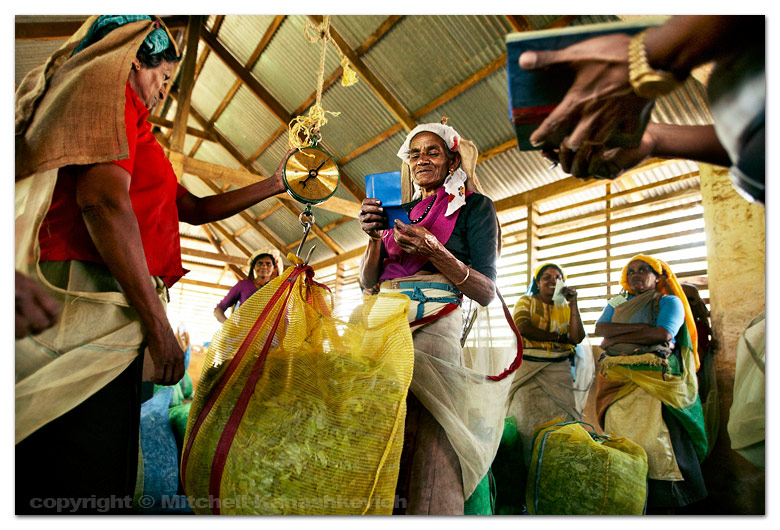 Photos
I mostly photographed at one tea plantation, which was located not far from the place where I stayed. Coming back and photographing in the same place is beneficial because not only do you become familiar with the location, but the people you are photographing also become more familiar with you. The people at this particular plantation were absolutely wonderful. They were childlike in the way they became excited when they saw two foreigners enter their world, which I imagine for them is rather mundane. All eyes were on us. A smile would be met with a huge grin and shy laughter. In the distance we could hear the workers quietly telling each other what to say - '"What is your name?" "What is your native place?" and then someone would work up enough courage to ask the questions out loud. Our answers would be met with even more excited laughter and commotion. It seemed as if the workers were saying to each other "It worked! They understood us!". Taking a photograph of the women usually led to the women cracking up with shy laughter, while those that were outside of the photo would joke and say "Smile please!", until I would point the camera at them and they'd also crack up. Photographing at this tea plantation was one of those beautiful, simple, childlike experiences which makes me feel happy I'm doing this. Photography gave me a reason to be in what is simply a workplace for the people in my images and it brought a little laughter into their lives. If I could shoot in such stunning locations and have it this way all the time I wouldn't complain :).
Photos
I mostly photographed at one tea plantation, which was located not far from the place where I stayed. Coming back and photographing in the same place is beneficial because not only do you become familiar with the location, but the people you are photographing also become more familiar with you. The people at this particular plantation were absolutely wonderful. They were childlike in the way they became excited when they saw two foreigners enter their world, which I imagine for them is rather mundane. All eyes were on us. A smile would be met with a huge grin and shy laughter. In the distance we could hear the workers quietly telling each other what to say - '"What is your name?" "What is your native place?" and then someone would work up enough courage to ask the questions out loud. Our answers would be met with even more excited laughter and commotion. It seemed as if the workers were saying to each other "It worked! They understood us!". Taking a photograph of the women usually led to the women cracking up with shy laughter, while those that were outside of the photo would joke and say "Smile please!", until I would point the camera at them and they'd also crack up. Photographing at this tea plantation was one of those beautiful, simple, childlike experiences which makes me feel happy I'm doing this. Photography gave me a reason to be in what is simply a workplace for the people in my images and it brought a little laughter into their lives. If I could shoot in such stunning locations and have it this way all the time I wouldn't complain :).
 From top to bottom:
First: A worker carrying a bag of tea from the store-room onto a tractor, which takes the day's harvest to a factory for the tea to be processed. Those bags weigh about 50kg each.
Second: A crowd gathers outside the Mysore palace. During the festival of Dussehra and every Sunday from 7-8pm the whole palace lights up with ninety-six thousand lightbulbs. Just after the photo was taken I joined the crowd.
Third: View of the workers from the bottom.
Fourth: Tea Plucker (as they are locall called) named Vindhu at work.
Fifth: Carrying the harvest on a foggy morning.
Sixth: Weighing the harvest at the store room.
Seventh: Sun sets over the tea plantation.
From top to bottom:
First: A worker carrying a bag of tea from the store-room onto a tractor, which takes the day's harvest to a factory for the tea to be processed. Those bags weigh about 50kg each.
Second: A crowd gathers outside the Mysore palace. During the festival of Dussehra and every Sunday from 7-8pm the whole palace lights up with ninety-six thousand lightbulbs. Just after the photo was taken I joined the crowd.
Third: View of the workers from the bottom.
Fourth: Tea Plucker (as they are locall called) named Vindhu at work.
Fifth: Carrying the harvest on a foggy morning.
Sixth: Weighing the harvest at the store room.
Seventh: Sun sets over the tea plantation.
The Spirit of Travel, Cool in the Hills and Tibetan Monks
 If I do not see another Theyyam performance for the rest of my life I will not be devastated. Don't get me wrong, watching these was amazing, surreal, but maybe this is the case of too much of a good thing being not that great. "Theyyam Overload", perhaps. The highlight of our little endeavor into the world of Theyyam must have been the second time we met up with Vipin - the Theyyam artist I mentioned in the previous post. That day, in many ways embodied what travel is all about. It started horribly, we were 'evicted' from possibly the most amazing hotel I've stayed at. Our room's balcony had a view of the Arabian sea. Every morning we watched dolphins splash around within 50 meters from the shore.Long and strange story about the eviction - in short, the hotel was meant for government employees only, but somehow we managed to stay for five days, then some genius finally decided it was enough. The main point is - once you've tasted the good life, it really, really sucks getting back to mediocrity. Getting told to 'vacate' our perfect room and to exchange sea views for views of a sea of traffic on one of the towns busiest and noisiest roads set up what could have been the most disappointing day of our journey, yes the place was that good (and cost about as much as a McDonald's value meal). But that wasn't the end of our bad luck. First we couldn't find any half decent hotel to move to and then my meeting with a professor at the Folklore Academy, the man who had promised to hook me up with some Theyyam artists was cancelled due to an unexpected meeting that could not be put off. I wanted to see him to get reliable information on where I could see more Theyyams. Having been given the wrong information the day before we traveled a couple of hours along a dreadful, traffic filled road for nothing. Now I had to face the fact; I had come to the region to photograph something that I couldn't even find, I really wasn't getting anywhere.
If I do not see another Theyyam performance for the rest of my life I will not be devastated. Don't get me wrong, watching these was amazing, surreal, but maybe this is the case of too much of a good thing being not that great. "Theyyam Overload", perhaps. The highlight of our little endeavor into the world of Theyyam must have been the second time we met up with Vipin - the Theyyam artist I mentioned in the previous post. That day, in many ways embodied what travel is all about. It started horribly, we were 'evicted' from possibly the most amazing hotel I've stayed at. Our room's balcony had a view of the Arabian sea. Every morning we watched dolphins splash around within 50 meters from the shore.Long and strange story about the eviction - in short, the hotel was meant for government employees only, but somehow we managed to stay for five days, then some genius finally decided it was enough. The main point is - once you've tasted the good life, it really, really sucks getting back to mediocrity. Getting told to 'vacate' our perfect room and to exchange sea views for views of a sea of traffic on one of the towns busiest and noisiest roads set up what could have been the most disappointing day of our journey, yes the place was that good (and cost about as much as a McDonald's value meal). But that wasn't the end of our bad luck. First we couldn't find any half decent hotel to move to and then my meeting with a professor at the Folklore Academy, the man who had promised to hook me up with some Theyyam artists was cancelled due to an unexpected meeting that could not be put off. I wanted to see him to get reliable information on where I could see more Theyyams. Having been given the wrong information the day before we traveled a couple of hours along a dreadful, traffic filled road for nothing. Now I had to face the fact; I had come to the region to photograph something that I couldn't even find, I really wasn't getting anywhere.
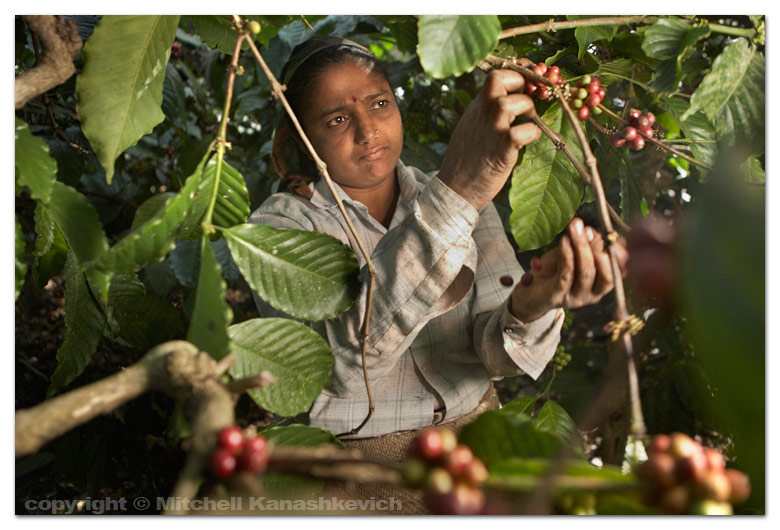 Ready to cry like a child who's been told he's not getting a bicycle after all, I decided instead to go to Vipin's village and give him the Theyyam photos I shot on the night I met him. Vipin was happy to see me and to receive the photos, I couldn't quite match his enthusiasm. But that all changed when he told us that there was a Theyyam performance in his very village. In fact there were two performances that night. These weren't Theyyams aimed at mass audiences, media and tourists, instead I witnessed what was probably as close to Theyyam as it had been hundreds of years ago - raw, sometimes brutal and always full of energy. By late night we had seen a Theyyam performer, possessed by the divine spirit behead four roosters...with his bear teeth, another performer walk through fire and yet another, dance around frantically to some of the most incredible drumming I've heard. We called it a night close to 11pm - real late for rural Kerala. Vipin had been called home a couple of hours before and we were left in the dark, in the middle of nowhere, dependent on our memory to get back. After almost getting lost in the narrow, dark village roads we somehow made it to the main highway that led to Kannur. As we rode the motorcycle back to town, we reflected on the day that pretty much summed up the realities of this life on the road. We were reminded once again that even in the face of the biggest disappointments something amazing could be just around the corner. Knowing that Tanya - my wife was sitting behind me on the bike, ready to face all the obstacles with me also made me realise just how lucky I am.
Ready to cry like a child who's been told he's not getting a bicycle after all, I decided instead to go to Vipin's village and give him the Theyyam photos I shot on the night I met him. Vipin was happy to see me and to receive the photos, I couldn't quite match his enthusiasm. But that all changed when he told us that there was a Theyyam performance in his very village. In fact there were two performances that night. These weren't Theyyams aimed at mass audiences, media and tourists, instead I witnessed what was probably as close to Theyyam as it had been hundreds of years ago - raw, sometimes brutal and always full of energy. By late night we had seen a Theyyam performer, possessed by the divine spirit behead four roosters...with his bear teeth, another performer walk through fire and yet another, dance around frantically to some of the most incredible drumming I've heard. We called it a night close to 11pm - real late for rural Kerala. Vipin had been called home a couple of hours before and we were left in the dark, in the middle of nowhere, dependent on our memory to get back. After almost getting lost in the narrow, dark village roads we somehow made it to the main highway that led to Kannur. As we rode the motorcycle back to town, we reflected on the day that pretty much summed up the realities of this life on the road. We were reminded once again that even in the face of the biggest disappointments something amazing could be just around the corner. Knowing that Tanya - my wife was sitting behind me on the bike, ready to face all the obstacles with me also made me realise just how lucky I am.
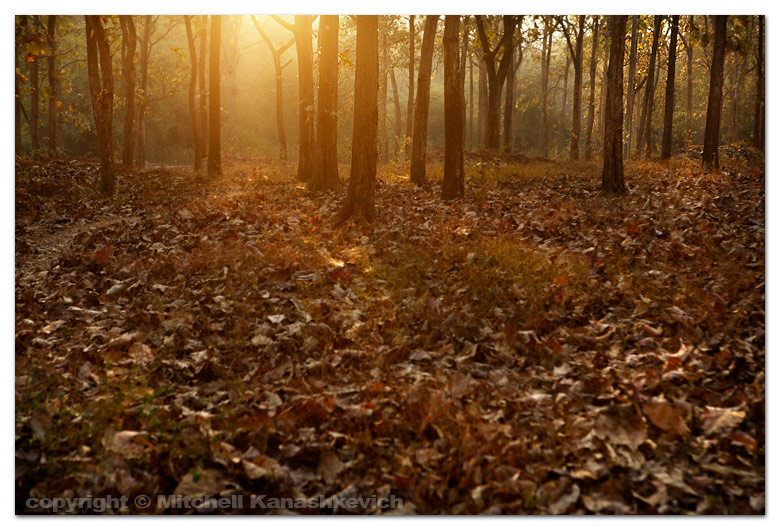 The Theyyam stuff, the heat of coastal Kerala and continuous, hectic rides to the surrounding villages again left us feeling a little drained. We had been contemplating going to Coorg - a hilly region with a cool climate, to refresh for a couple of days, then we'd head back down the coast to Thrissur - one of Kerala's cultural centers. On the map Coorg isn't far from Kannur - 113km. But as always, in India - expect the unexpected. A relatively small patch of the road, known locally as the forest road, was how shall I say - damaged. The damage was so bad that the road looked like it had been bombed continuously for 16 km. I figured that I had traveled on similar roads before, so I didn't make that much of it. BIG mistake! Almost 10km through we started hearing all sorts of noises from our beloved motorcycle. We stopped, I lifted the bike seat and there it was, my worst fear had come true - the motorcycle frame/chasis was broken, snapped right in the middle. To avoid messing things up even more we couldn't continue traveling with all that load and Tanya on the back, and so my poor wife had to walk 6km up a winding, hilly forest road, while I slowly and carefully navigated my way around giant pot holes towards a better road.
The Theyyam stuff, the heat of coastal Kerala and continuous, hectic rides to the surrounding villages again left us feeling a little drained. We had been contemplating going to Coorg - a hilly region with a cool climate, to refresh for a couple of days, then we'd head back down the coast to Thrissur - one of Kerala's cultural centers. On the map Coorg isn't far from Kannur - 113km. But as always, in India - expect the unexpected. A relatively small patch of the road, known locally as the forest road, was how shall I say - damaged. The damage was so bad that the road looked like it had been bombed continuously for 16 km. I figured that I had traveled on similar roads before, so I didn't make that much of it. BIG mistake! Almost 10km through we started hearing all sorts of noises from our beloved motorcycle. We stopped, I lifted the bike seat and there it was, my worst fear had come true - the motorcycle frame/chasis was broken, snapped right in the middle. To avoid messing things up even more we couldn't continue traveling with all that load and Tanya on the back, and so my poor wife had to walk 6km up a winding, hilly forest road, while I slowly and carefully navigated my way around giant pot holes towards a better road.
 We decided to stop for the night at Madikeri - Coorg's biggest town. Our chances of fixing the chasis in this remote region were slim, but Madikeri was our best bet. Again we were facing a very unpleasant situation, but as has happened countless times in India, a stranger came to the rescue. After failed attempts to explain what I need and a few rejections from mechanics and welders who understood, we unexpectedly came across Joe - a catholic Indian man from the coastal city of Cochin. Joe was looking to buy a motor to use for a crop-sorting machine on his spice estate. He came to the same place where we were trying to find out whether our problem can be fixed. After hearing our predicament Joe took it upon himself to help out the guests in his country. The next day his two equally helpful nephews Jeremy and Ronald were involved and although the task became a job of epic proportions (Madikeri is a relatively small town) it was done by the end of the afternoon. It was a little late to head to our next destination and we decided we'd stay another night in Madikeri, that was until Ronald, Joe's nephew called. Ronald found out that I was interested in checking out some tea or coffee plantations/estates and so he invited us over to his estate for the night. We couldn't resist. Another potentially horrible situation had turned in our favor. The next morning we woke up in a mini forest of coffee and pepper bush, as well as some very tall (and apparently expensive) trees. The golden light played it's role in making everything magic. Tanya and I wondered around, appreciated the surroundings and shot a few frames. We expressed our gratitude to our new friends, who saved us and turned a potential disaster into one of the most memorable moments of our journey. Then it was time to move on. Next stop - Bylakuppe - a Tibetan refugee settlement. That's where we are as I type.
We decided to stop for the night at Madikeri - Coorg's biggest town. Our chances of fixing the chasis in this remote region were slim, but Madikeri was our best bet. Again we were facing a very unpleasant situation, but as has happened countless times in India, a stranger came to the rescue. After failed attempts to explain what I need and a few rejections from mechanics and welders who understood, we unexpectedly came across Joe - a catholic Indian man from the coastal city of Cochin. Joe was looking to buy a motor to use for a crop-sorting machine on his spice estate. He came to the same place where we were trying to find out whether our problem can be fixed. After hearing our predicament Joe took it upon himself to help out the guests in his country. The next day his two equally helpful nephews Jeremy and Ronald were involved and although the task became a job of epic proportions (Madikeri is a relatively small town) it was done by the end of the afternoon. It was a little late to head to our next destination and we decided we'd stay another night in Madikeri, that was until Ronald, Joe's nephew called. Ronald found out that I was interested in checking out some tea or coffee plantations/estates and so he invited us over to his estate for the night. We couldn't resist. Another potentially horrible situation had turned in our favor. The next morning we woke up in a mini forest of coffee and pepper bush, as well as some very tall (and apparently expensive) trees. The golden light played it's role in making everything magic. Tanya and I wondered around, appreciated the surroundings and shot a few frames. We expressed our gratitude to our new friends, who saved us and turned a potential disaster into one of the most memorable moments of our journey. Then it was time to move on. Next stop - Bylakuppe - a Tibetan refugee settlement. That's where we are as I type.
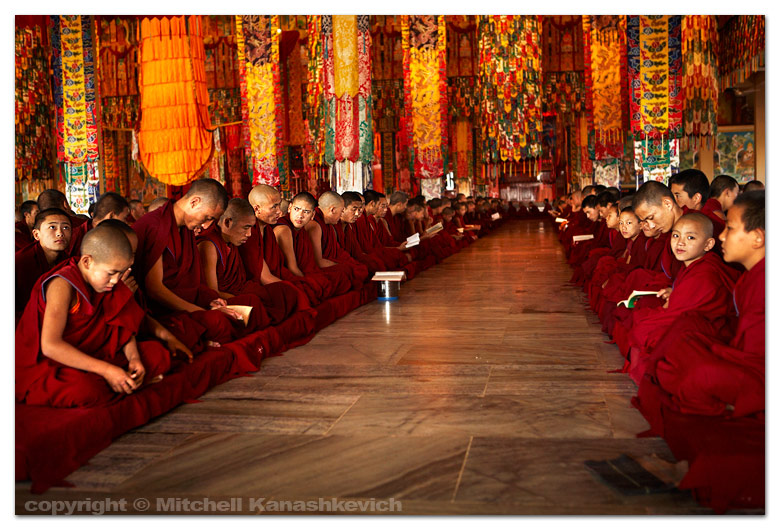 Bylakuppe is a peaceful place, full of maroon robed monks and monasteries. It ain't Himalaya, but there's still something special about it. Monasteries and monks are always photogenic, so we've already spent a few days photographing here. Tomorrow we head off on a little detour, to avoid the dreadful 'Forest Road'. We'll probably end up in Mysore for a few days, then it's on to Wayanad. This cool climate and nature stuff has inspired me to spend some more time up in the hills, in India's forested areas.
Now to the photos. From top to bottom: Monks rushing out after the Morning Prayer, Sera Jey Temple, Bylakuppe. Coffee berry picker at Ronald's estate, Coorg. Morning along the road in Coorg, Kushalnagar region. A mahout washing his elephant at the Dubare Forest Reserve (Forgot to mention we went there. Shot this while standing knee high in water filled with elephant urine and crap ) Bottom: Inside of Sera Jey Temple, Bylakuppe.
Bylakuppe is a peaceful place, full of maroon robed monks and monasteries. It ain't Himalaya, but there's still something special about it. Monasteries and monks are always photogenic, so we've already spent a few days photographing here. Tomorrow we head off on a little detour, to avoid the dreadful 'Forest Road'. We'll probably end up in Mysore for a few days, then it's on to Wayanad. This cool climate and nature stuff has inspired me to spend some more time up in the hills, in India's forested areas.
Now to the photos. From top to bottom: Monks rushing out after the Morning Prayer, Sera Jey Temple, Bylakuppe. Coffee berry picker at Ronald's estate, Coorg. Morning along the road in Coorg, Kushalnagar region. A mahout washing his elephant at the Dubare Forest Reserve (Forgot to mention we went there. Shot this while standing knee high in water filled with elephant urine and crap ) Bottom: Inside of Sera Jey Temple, Bylakuppe.
Impressions of Kerala and Theyyam
 Having been in Kerala for a few days now (albeit only one very small part) I guess I have some impressions. The Kannur region, where I am staying is very different from anywhere I've been in India. The thing that has really struck me and Tanya is the amount of huge mansions (that put to shame some of the grandest Sydney sea-side houses) we've seen in all of the villages we've visited. This is not a poor man's region and not seeing at least a few mud houses, or at least small houses in a village, it feels almost un-Indian. There is a lot of development taking place in the region - lots of fast food chains, even a few shopping centers, again this is rather new for me, because Kannur is not even a big city. Could the communist government of Kerala be responsible for all this 'prosperity'? We ran across a Russian couple, who are staying at a beach resort 15km away from where I am. The resort owner is a very proud member of the communist party and when we met he raved on about how great communism has been in Kerala. Unfortunately, when he asked about the way communism was in Russia we couldn't match his enthusiasm, to which he responded - Well maybe it was different over there, here it is great! This development, the huge mansions, the communism - I am still trying to get my head around it all, I'd like to come across someone who can give me a more accurate understanding of everything. One thing for sure, for a photographer like myself, who tries to capture ancient culture and traditions Kannur town is no place to be, but I have simply based myself here for a few days to photograph the Theyyam.
Having been in Kerala for a few days now (albeit only one very small part) I guess I have some impressions. The Kannur region, where I am staying is very different from anywhere I've been in India. The thing that has really struck me and Tanya is the amount of huge mansions (that put to shame some of the grandest Sydney sea-side houses) we've seen in all of the villages we've visited. This is not a poor man's region and not seeing at least a few mud houses, or at least small houses in a village, it feels almost un-Indian. There is a lot of development taking place in the region - lots of fast food chains, even a few shopping centers, again this is rather new for me, because Kannur is not even a big city. Could the communist government of Kerala be responsible for all this 'prosperity'? We ran across a Russian couple, who are staying at a beach resort 15km away from where I am. The resort owner is a very proud member of the communist party and when we met he raved on about how great communism has been in Kerala. Unfortunately, when he asked about the way communism was in Russia we couldn't match his enthusiasm, to which he responded - Well maybe it was different over there, here it is great! This development, the huge mansions, the communism - I am still trying to get my head around it all, I'd like to come across someone who can give me a more accurate understanding of everything. One thing for sure, for a photographer like myself, who tries to capture ancient culture and traditions Kannur town is no place to be, but I have simply based myself here for a few days to photograph the Theyyam.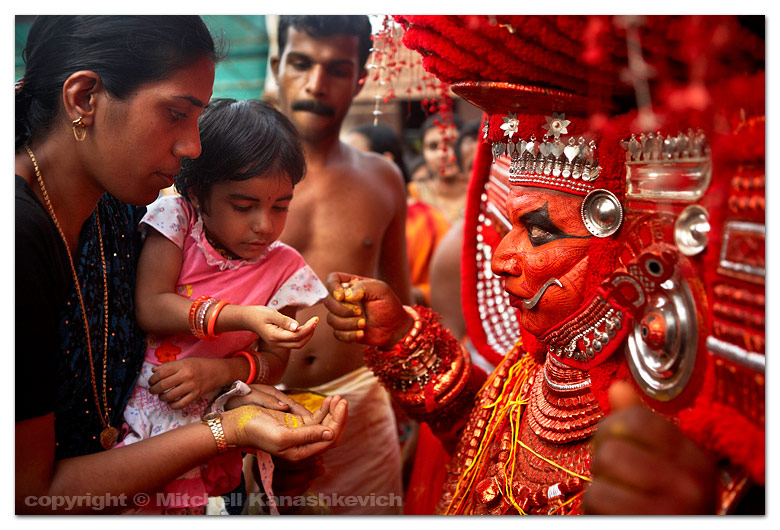 Photographing the Theyyam has been fascinating and frustrating. Fascinating because, well I think the images suggest why, and frustrating for several reasons. First there are crowds and then there are crowds of local photographers who battle for a good angle, not something I'm used to, since I rarely come across 'likeminded individuals' on my photographic quests. The next source of frustration comes from the fact that Theyyam is a deeply religious performance, in fact Theyyam means 'God' in the local language and so while the artist is performing he is basically a deity. When photographing such performances without much knowledge (learning on the spot from the fellow photographers who sometimes get reprimanded for pushing past anyone and anything) one has to tread carefully, not to offend anyone. Of course you could say that I could be better prepared and learn more about what I'm photographing, but not so. I have learned about the principal ideas and the history, however there are more than 400 Theyyam performances which are somewhat different from each other, not only that, the performances take place in different temples all the time and that means that the degree of restrictions is variable. On any given day I do not even know which Theyyam I'll be photographing.
Photographing the Theyyam has been fascinating and frustrating. Fascinating because, well I think the images suggest why, and frustrating for several reasons. First there are crowds and then there are crowds of local photographers who battle for a good angle, not something I'm used to, since I rarely come across 'likeminded individuals' on my photographic quests. The next source of frustration comes from the fact that Theyyam is a deeply religious performance, in fact Theyyam means 'God' in the local language and so while the artist is performing he is basically a deity. When photographing such performances without much knowledge (learning on the spot from the fellow photographers who sometimes get reprimanded for pushing past anyone and anything) one has to tread carefully, not to offend anyone. Of course you could say that I could be better prepared and learn more about what I'm photographing, but not so. I have learned about the principal ideas and the history, however there are more than 400 Theyyam performances which are somewhat different from each other, not only that, the performances take place in different temples all the time and that means that the degree of restrictions is variable. On any given day I do not even know which Theyyam I'll be photographing.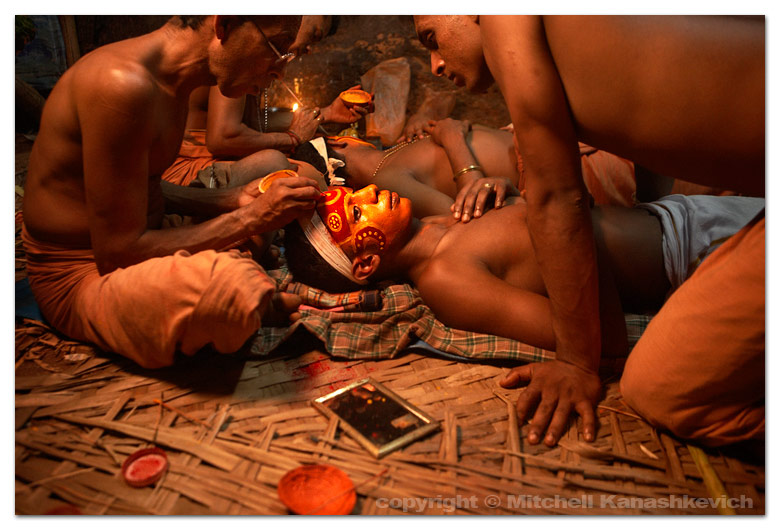
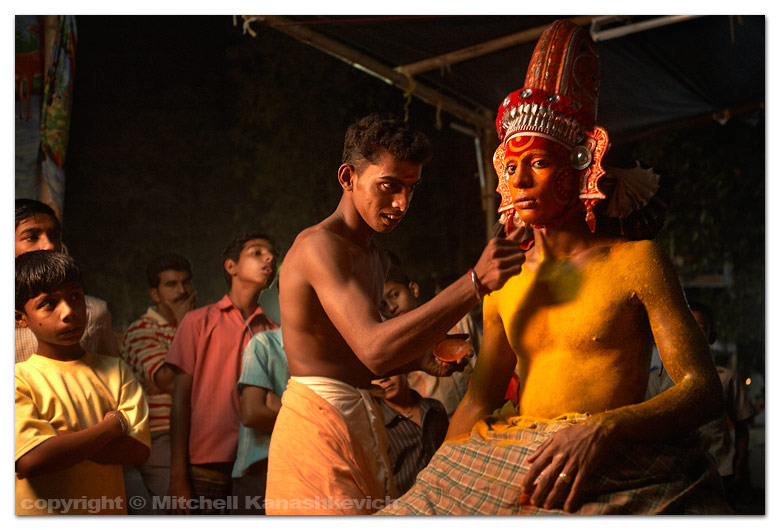 The first Theyyam the "Muhcilot" left me rather unimpressed, performance wise. In short it consisted of an elaborately dressed plump artist circling the temple and murmuring something in what I later found out to be a mixture of Sanskrit, Old Malayalam and Tamil (south Indian languages). Then the devotees rushed in, blessings were given and money started pouring in from all directions, so much money that it had to be put into baskets to be carried away. This went on for over two hours and as I later found out (I couldn't bear staying any longer) it would go into the night, until all of the devotees were blessed.
The first Theyyam the "Muhcilot" left me rather unimpressed, performance wise. In short it consisted of an elaborately dressed plump artist circling the temple and murmuring something in what I later found out to be a mixture of Sanskrit, Old Malayalam and Tamil (south Indian languages). Then the devotees rushed in, blessings were given and money started pouring in from all directions, so much money that it had to be put into baskets to be carried away. This went on for over two hours and as I later found out (I couldn't bear staying any longer) it would go into the night, until all of the devotees were blessed.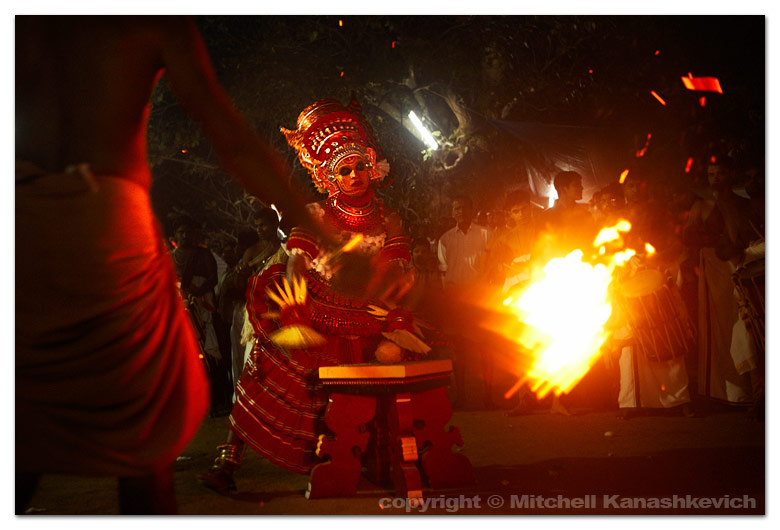
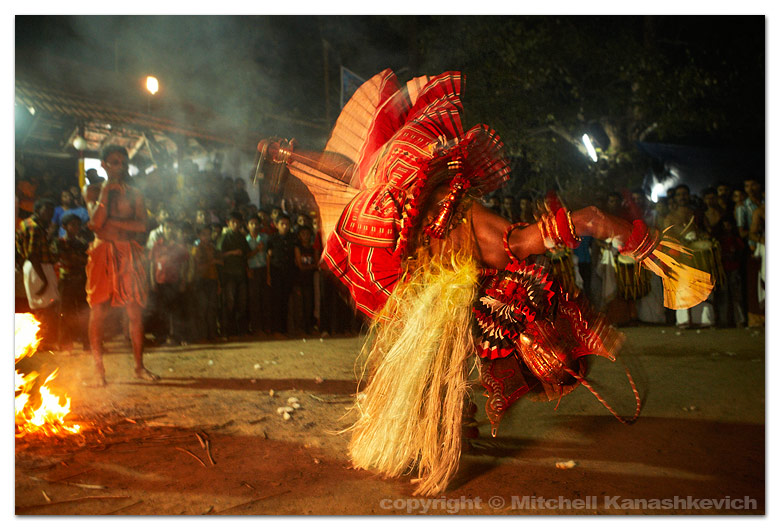 The second Theyyam was the same as the first and rather than watch it I decided to head to the Kerala Folklore Academy, to learn whether there was more to Theyyam than what I had seen. The photos on the walls of their small museum and a very brief conversation with a very-busy-overtime-working Theyyam expert left me with the belief that indeed there was much more to Theyyam. The very next night I would see just how much more. Upon arriving at another village temple I unknowingly befriended a young Theyyam artist who spoke basic English. When I found out who he was and who the small group of young men with him were (all Theyyam artists) I asked if I could photograph them while they put on their makeup and get dressed, they agreed. I photographed the whole process and then, suddenly the temple drummers began to beat a dramatic tune, the last elements of the costume were in place and the artist, as if possessed by a wild beast, jumped from his make up chair and rushed into the temple. His performance would be a stark contrast to the monotonous stuff I had seen earlier. There was fast, loud, dramatic drumming, fire, summersaults and cartwheels. The next Theyyam performance was even more impressive, with more of the same content, executed in an even more dramatic manner. The whole thing was pretty amazing, the atmosphere, the crowd's reaction and of course the Theyyam itself. Tanya and I definitely felt the magic in the air.
The second Theyyam was the same as the first and rather than watch it I decided to head to the Kerala Folklore Academy, to learn whether there was more to Theyyam than what I had seen. The photos on the walls of their small museum and a very brief conversation with a very-busy-overtime-working Theyyam expert left me with the belief that indeed there was much more to Theyyam. The very next night I would see just how much more. Upon arriving at another village temple I unknowingly befriended a young Theyyam artist who spoke basic English. When I found out who he was and who the small group of young men with him were (all Theyyam artists) I asked if I could photograph them while they put on their makeup and get dressed, they agreed. I photographed the whole process and then, suddenly the temple drummers began to beat a dramatic tune, the last elements of the costume were in place and the artist, as if possessed by a wild beast, jumped from his make up chair and rushed into the temple. His performance would be a stark contrast to the monotonous stuff I had seen earlier. There was fast, loud, dramatic drumming, fire, summersaults and cartwheels. The next Theyyam performance was even more impressive, with more of the same content, executed in an even more dramatic manner. The whole thing was pretty amazing, the atmosphere, the crowd's reaction and of course the Theyyam itself. Tanya and I definitely felt the magic in the air.
There is much more to Theyyam, the story behind it is quite fascinating and while I will probably write much more about it in the future, for the moment there is no time to share this on the blog. However, if anyone's interested here's a website that goes into a bit of depth about Theyyam: www.theyyam.com
Now to the photos. Tanya and I wanted to see whether we could manage to work our two person team with an off camera flash for the images taken after dark. It worked great for the make-up part. A gel was placed over the flash to warm the light and then a portable softbox, to make that light less harsh. Again I simply wanted to simulate natural light - a candle, or a warm light bulb - whatever doesn't strike one immediately as a harsh flash. Without the flash there would be no images or they's be horrendous. If I were to use a 1/20 Shutter speed I could have possibly come up with something visible, but very flat and that wouldn't do justice to the 'subject'. This two person set-up of ours works nicely in a relatively small or a closed off space and when the line of vision is maintained between the IR flash remote and the flash. Different story when the line of vision is lost - the person with the flash has to twist the flash sensor towards the camera and has to remain parallel or a little in front of the camera. If not - the flash will simply not go off. Very frustrating, but that's the price to pay for not using the radio transmitter systems. On the plus side - I do not look like I have a walkie-talkie on top of my camera and I attract a little bit less attention then I would have otherwise.
New Year, Giant Prawns and Kerala...finally
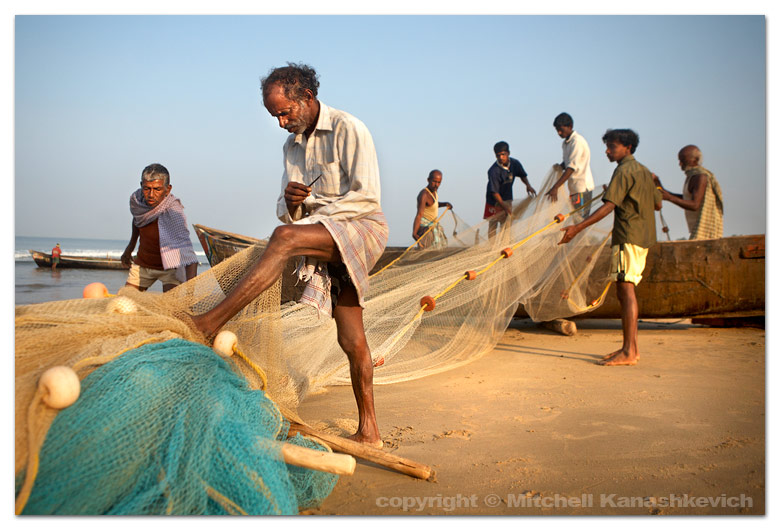 Yes, my first blog entry for 2009 is well over due, but we are on the road after all and we are exhausted. Yesterday we finally arrived in "God's Own Country" - Kerala. We watched sunset from the beach, but I was so tired that I fell asleep right there on the sand. We are already around 2000km from Bundi - the place where we started our motorcycle journey. The way from Goa to Kerala isn't so long, but it has been more tiring than our other journeys. National Highway 17 is going into my books as one of the crappiest major roads in India, albeit one of the more beautiful.
Our New Year's Eve was one of the best I've had, ever. In Arambol, Goa Tanya and I became friends with a girl from Moscow who shared our, well more like my craze for seafood. She joined in our plan to buy seafood for cheap at the fish market and cook it by the fire on the beach on New Year's Eve. The evening went even better than planned; we somehow managed to find an empty beach, lit a fire and cooked our gigantic prawns and an equally gigantic crab. Of course being really far from the action in Goa is impossible and so we were treated to a few rounds of fireworks from the neighboring beaches.
Yes, my first blog entry for 2009 is well over due, but we are on the road after all and we are exhausted. Yesterday we finally arrived in "God's Own Country" - Kerala. We watched sunset from the beach, but I was so tired that I fell asleep right there on the sand. We are already around 2000km from Bundi - the place where we started our motorcycle journey. The way from Goa to Kerala isn't so long, but it has been more tiring than our other journeys. National Highway 17 is going into my books as one of the crappiest major roads in India, albeit one of the more beautiful.
Our New Year's Eve was one of the best I've had, ever. In Arambol, Goa Tanya and I became friends with a girl from Moscow who shared our, well more like my craze for seafood. She joined in our plan to buy seafood for cheap at the fish market and cook it by the fire on the beach on New Year's Eve. The evening went even better than planned; we somehow managed to find an empty beach, lit a fire and cooked our gigantic prawns and an equally gigantic crab. Of course being really far from the action in Goa is impossible and so we were treated to a few rounds of fireworks from the neighboring beaches.
I guess from my limited time in Goa I can say that it is indeed a different world to the rest of India. Those who don't venture outside of this tiny state would certainly get a very warped idea of what India is like. I mean where else in India could you see bikini clad European girls riding scooters? The thing is they don't even usually get stared at (at least not in Arambol). It was an absolute shock to me and Tanya at first, simply didn't make sense that this was happening in a country where the only women showing skin are Bollywood stars that can only be seen on TV and on billboards, in a country where for most part men and women do not even hold hands in public, where village women rarely unveil their faces. Perhaps the bikini girls were oblivious to that India or perhaps they had been there and had enough, it felt like this was their turf and their turn to make the rules.
There are many things that make Goa very different from the 'real' India. It's cleaner, it's richer and dare I say more open minded. This open mindedness often leads to 'progress' but just as often it destroys local cultures and ways of living. I avoided Goa over my past three trips to India because I expected to see nothing more than hoards of tourists and dreadlocked, grass smoking foreigners. In many cases that held true, but in many others it did not. The culture is still there, it's in the churches of Old Goa, the streets of Panjim, it is probably in the villages away from the coast. Given enough time before my trip ends I plan to come back and peak into Goa's quieter pockets.
Our next stop was in North Karnataka, Gokarna - a small temple town with a hippy vibe. There are no parties like those of Goa in Gokarna. It seems that the foreigners who come here come to simply chill and get an occasional sample of the local culture, which exists oblivious to the dreadlocks, bikinis and newly opened cafes with foreign menus.
Every morning beautifully dressed Brahmins (priests) can be seen going in an out of temples, pilgrims are praying, making offerings and occasionally wetting their feet in the sea, while at the North end of Gokarna beach old fishermen mend their nets and set out to make a living the same way that their forefathers have for generations. The really big draw cards of the region are the quieter, ideallyc beaches of Om and Kudle. I have only been to Om and while the amount of rubbish that covers the path down to the beach is abhorring, the beach itself is clean and very beautiful.
I wish I had unlimited time to stay longer in Gokarna, but I don't and so I had to move on after three days. On our final day in the area I had to satisfy my seafood lust once again, still joined by our friend from Moscow we bought a whole load of crabs and some prawns at the nearby fish market town of Kadidi and had the stuff barbequed for us at a beachside restaurant/shack. What a meal, the only problem or perhaps a blessing is the fact that I still can't look at seafood three days later, it will pass, I think. Our Moscow friend has joked that I should quit photography and write a guidebook for budget culinary travelers on where to find cheap food, where to have it cooked etc. Hey, might not be such a bad idea.
Right now we're in Kannur - a town in an area of North of Kerala that is famous for Theyyam - a ritualistic dance where the performer is possessed by a higher power and becomes the embodiment of a God. From the photos I've seen it's pretty colorful and amazing. This is what I'm here for. It's Theyyam season and a performance/ritual happens almost daily. I'll see my first Theyyam tomorrow.
Kerala is also India's most educated state with over 90% literacy rate. How is this manifested in everyday life? Well, more people can speak good English, that's the obvious thing that stands out. However this wouldn't be India if there were no surprises. This evening we visited a fort built by the Portuguese in the 1500s. At the entrance sat a man, a simple looking mustached fellow with a badge "Tourist Police" on the left side of his shirt.
I had always thought that the caretakers/tourist police or whoever sits at the entrance of monuments are just there to fill a spot, to get paid a nominal wage because they do not have the qualifications to do much else. Boy was I wrong and I realized it as soon as the "Tourist Policeman" opened his mouth. In very good English he started to tell me in great detail about the fort. But that wasn't the surprise. Suddenly the man said - "Two years ago I had a book published about the history of this fort." - "Really?" - "Yes" I still found it slightly hard to believe until I saw it with my very own eyes - a book with a picture of the fort and Vasco Da Gamma at the front and a photo of the mustached Tourist Policeman smiling on the back cover.
On a side note, I have forgotten to mention that there is an interview with me HERE. Also for those who have enquired about my workshops, I do not know when the next one will be at this stage. However I will recommend this:
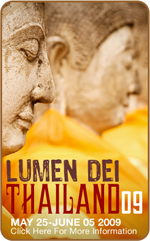 If you are lucky and can still get a spot you could be learning from some photographers who I really respect. Matt, David and Gavin are three guys who really know their stuff, as well as the often overlooked business side of travel photography. Anyway, in short hurry or book for next year, if it's possible.
If you are lucky and can still get a spot you could be learning from some photographers who I really respect. Matt, David and Gavin are three guys who really know their stuff, as well as the often overlooked business side of travel photography. Anyway, in short hurry or book for next year, if it's possible.
My images above: (Top) Fishermen preparing the nets before they go out to sea, Gokarna, Karnataka (Middle) A Brahmin (priest) outside a temple, Gokarna (Bottom) A scene at Malpe Harbour, Karnataka. Those marks in the sky are eagles and crows circling, looking for the odd fish to grab from the piles of what seemed to me like some sort of sea cockroaches.
Lazing Around in Goa
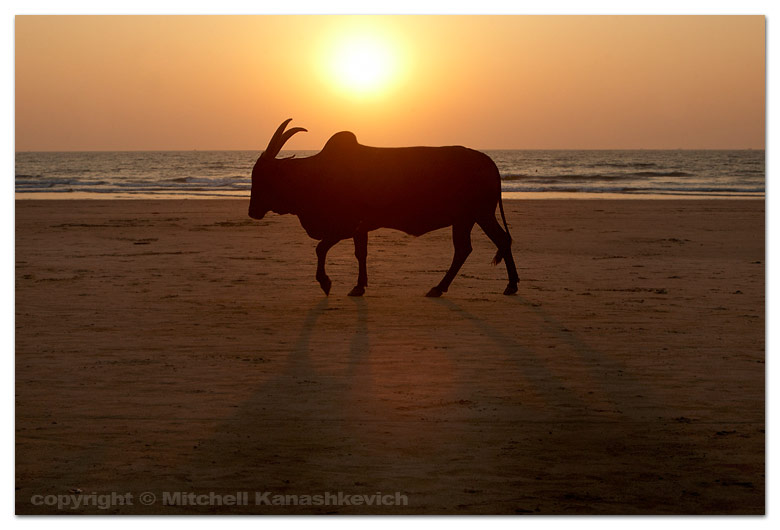 We're in Goa, in Arambol to be exact. The beach is nice and the rock formations at the North end are striking. People come here from all over the world for a dream holiday, many stay for weeks, months even. Tanya and I are getting a little bored after two days. Maybe the adventures and unpredictability of our travels make everything seem bland by comparison. Maybe we simply don't feel right in places like this. There is a mixture of dreads locks, piercings and tattoos in all imaginable places, local fashion adapted in Western ways and some wacky individuals that simply defy any descriptions. It all makes for a great people watching experience, but after a while; how much splashing in the sea and people watching of this sort can one take? Maybe we're spoilt by the beaches of Australia or maybe you need to be on something to get 'stuck' here for long. Some places in Goa are well known for drugs, I'm not into them and feel uneasy when people right in the middle of the street offer me hash and cocaine. This happened when we stopped to check out Anjuna (the place famous for the Wednesday flea market) offers started pouring from every direction as soon as we got off the motorbike. I'm kinda glad we are staying in a place where the stuff doesn't seem to be the dominant topic.Yesterday we visited Panjim, a town much more to my taste. Full of atmosphere, Portuguese architecture, bright colors and very importantly, unlike the beach villages, where everything revolves around tourism, Panjim has a life of its own. That's what I look for as a photographer and Panjim is the place where I'd like to stay for a few days, only problem is the price hikes for accommodation at this time of the year in even the most basic places. We'll see whether we'll find something suitable in the coming days. In any case we want to gradually make our way down South and continue on to Kerala, with stops at places we find interesting. For now I guess I'll have to be satisfied with lazing around on the beach. We did just have one of the more pleasant evenings in recent memory; watching a group of musicians randomly get together on the beach and listening to them play the tabla and the didgeridoo to the setting sun.
We're in Goa, in Arambol to be exact. The beach is nice and the rock formations at the North end are striking. People come here from all over the world for a dream holiday, many stay for weeks, months even. Tanya and I are getting a little bored after two days. Maybe the adventures and unpredictability of our travels make everything seem bland by comparison. Maybe we simply don't feel right in places like this. There is a mixture of dreads locks, piercings and tattoos in all imaginable places, local fashion adapted in Western ways and some wacky individuals that simply defy any descriptions. It all makes for a great people watching experience, but after a while; how much splashing in the sea and people watching of this sort can one take? Maybe we're spoilt by the beaches of Australia or maybe you need to be on something to get 'stuck' here for long. Some places in Goa are well known for drugs, I'm not into them and feel uneasy when people right in the middle of the street offer me hash and cocaine. This happened when we stopped to check out Anjuna (the place famous for the Wednesday flea market) offers started pouring from every direction as soon as we got off the motorbike. I'm kinda glad we are staying in a place where the stuff doesn't seem to be the dominant topic.Yesterday we visited Panjim, a town much more to my taste. Full of atmosphere, Portuguese architecture, bright colors and very importantly, unlike the beach villages, where everything revolves around tourism, Panjim has a life of its own. That's what I look for as a photographer and Panjim is the place where I'd like to stay for a few days, only problem is the price hikes for accommodation at this time of the year in even the most basic places. We'll see whether we'll find something suitable in the coming days. In any case we want to gradually make our way down South and continue on to Kerala, with stops at places we find interesting. For now I guess I'll have to be satisfied with lazing around on the beach. We did just have one of the more pleasant evenings in recent memory; watching a group of musicians randomly get together on the beach and listening to them play the tabla and the didgeridoo to the setting sun.
Christmas and Mud Wrestling
 It's Christmas and boy am I glad to be away from all the commotion. We have spent the last nine days in Kolhapur - a city in the South of India, not too far from Goa, here not many people are aware of the 'Festive Season'. There are no signs advertising Christmas specials, no Santa Clauses, none of the cheesiness associated with this holiday, which has long ago lost its meaning for most. Yes, I confess - I really don't like Christmas and everything associated with it. My time as Santa Clause photographer during university holidays years back probably has something to do with it. That really showed me the ugly side of Christmas. Obsessive mothers shouting at their terrified children to stop crying while they sit on the lap of a stranger in a costume, the manager telling you to "Smile, it's Christmas". Yeah, sure! I even managed to have an argument with Santa Clause, who was far from a nice guy, the whole experience was like one of those Ben Stiller movies, where he plays the innocent goofball and everything bad happens to him. I don't hate Christmas, I just don't like it, but to all those who do - Merry Christmas.Enough of that. I have just about completed shooting my first little photo project on Kusti - an ancient form of wrestling, in mud. The sight of men dressed in nothing but tiny underpants, covered in mud, sweating and grunting as they try to physically overwhelm each other and bring the opponent down is well...very strange, but also very photogenic. To an outsider this whole Kusti thing might seem like a cross between one of the most barbaric things in the world and just a couple of friends playing in the sand box. In one of the 'Thalims' (wrestling schools) some of the younger wrestlers don't even wrestle, they simply come into the pit and cover themselves with sand, head to toe, later they exercise and that's it, training over. Tanya jokes that I play with my little friends in the sandbox every time I go photographing and get into the mud pit. I also end up getting dirty, although not voluntarily, as I sit, lie down and lean against walls to photograph the action. Almost all of the wrestlers are great guys. Really, truly great. Hospitable, kind and friendly. Even the meanest looking badass is a teddy bear inside. It will even be a little sad to depart, since we've come to know almost everyone in the Motibagh Thalim - the place where I've photographed most. There is a lot to Kusti, but I will not go into it in too much detail for now. Instead I am posting a few images. As you can see the light was rather surreal in some of them, no need for anything additional.
It's Christmas and boy am I glad to be away from all the commotion. We have spent the last nine days in Kolhapur - a city in the South of India, not too far from Goa, here not many people are aware of the 'Festive Season'. There are no signs advertising Christmas specials, no Santa Clauses, none of the cheesiness associated with this holiday, which has long ago lost its meaning for most. Yes, I confess - I really don't like Christmas and everything associated with it. My time as Santa Clause photographer during university holidays years back probably has something to do with it. That really showed me the ugly side of Christmas. Obsessive mothers shouting at their terrified children to stop crying while they sit on the lap of a stranger in a costume, the manager telling you to "Smile, it's Christmas". Yeah, sure! I even managed to have an argument with Santa Clause, who was far from a nice guy, the whole experience was like one of those Ben Stiller movies, where he plays the innocent goofball and everything bad happens to him. I don't hate Christmas, I just don't like it, but to all those who do - Merry Christmas.Enough of that. I have just about completed shooting my first little photo project on Kusti - an ancient form of wrestling, in mud. The sight of men dressed in nothing but tiny underpants, covered in mud, sweating and grunting as they try to physically overwhelm each other and bring the opponent down is well...very strange, but also very photogenic. To an outsider this whole Kusti thing might seem like a cross between one of the most barbaric things in the world and just a couple of friends playing in the sand box. In one of the 'Thalims' (wrestling schools) some of the younger wrestlers don't even wrestle, they simply come into the pit and cover themselves with sand, head to toe, later they exercise and that's it, training over. Tanya jokes that I play with my little friends in the sandbox every time I go photographing and get into the mud pit. I also end up getting dirty, although not voluntarily, as I sit, lie down and lean against walls to photograph the action. Almost all of the wrestlers are great guys. Really, truly great. Hospitable, kind and friendly. Even the meanest looking badass is a teddy bear inside. It will even be a little sad to depart, since we've come to know almost everyone in the Motibagh Thalim - the place where I've photographed most. There is a lot to Kusti, but I will not go into it in too much detail for now. Instead I am posting a few images. As you can see the light was rather surreal in some of them, no need for anything additional.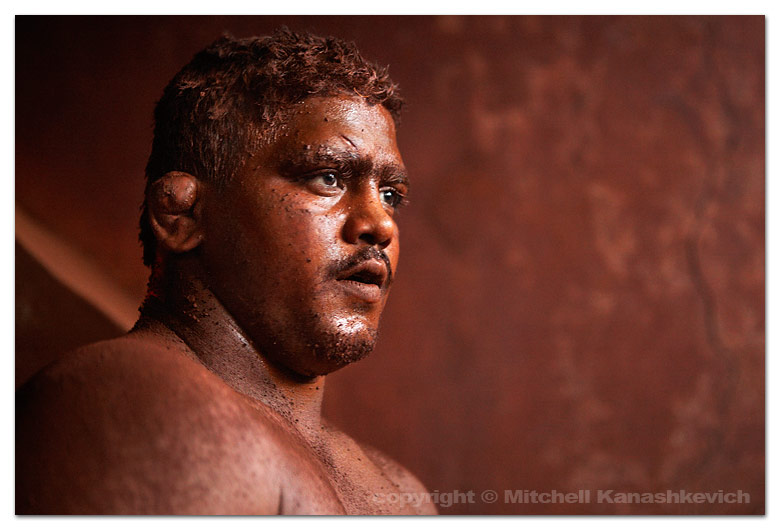
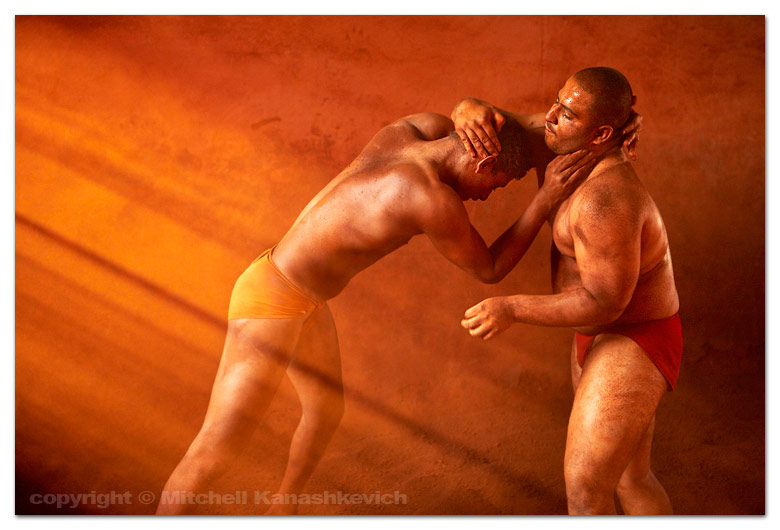

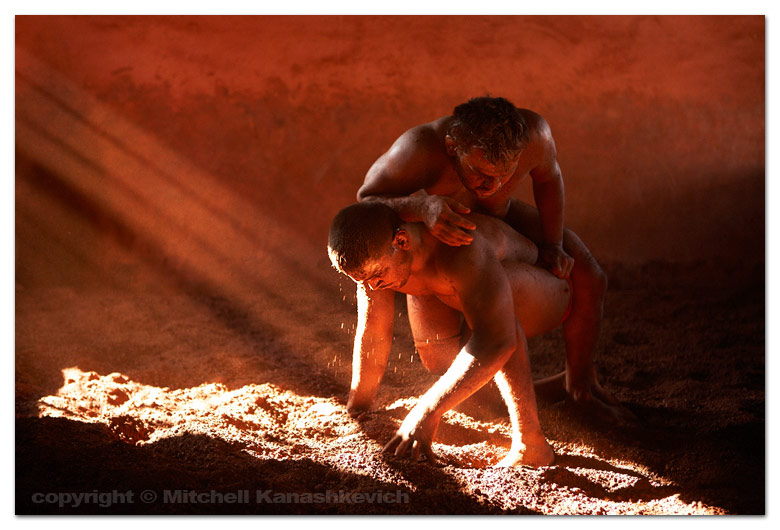
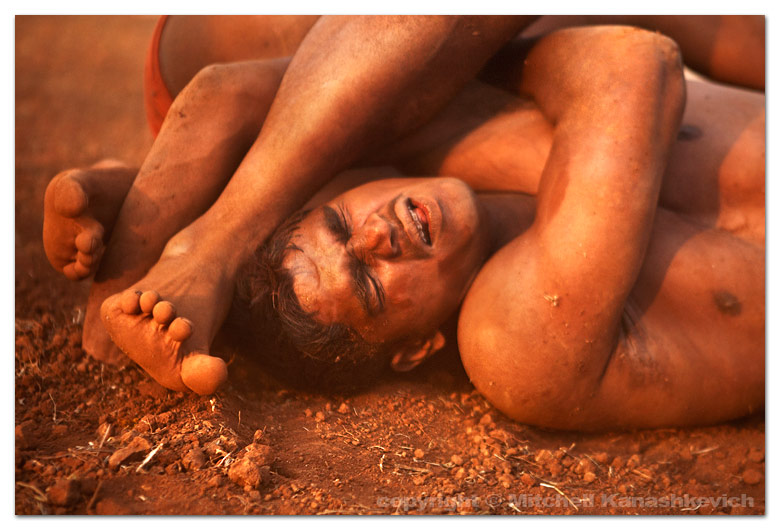
Back on the Road, Serenity at Maheshwar and Sadhus
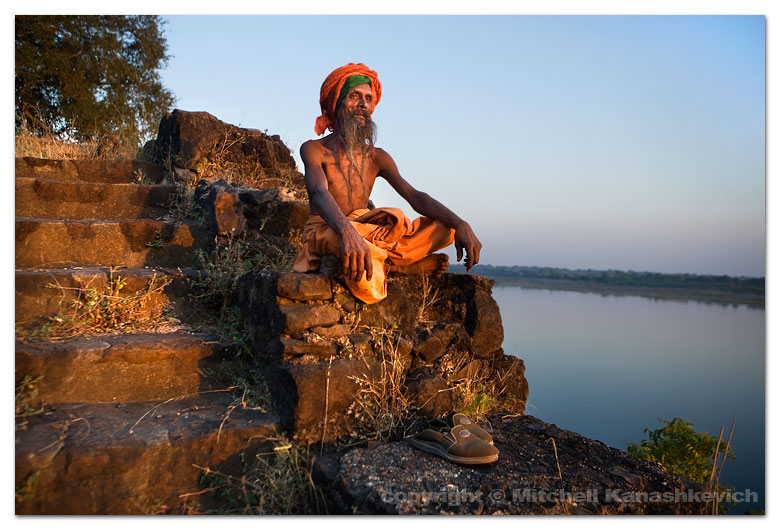 The last ten or so days have been intense. We have covered over 1000km of road, sometimes extremely bad road, pot-holed, narrow and full of half-competent drivers. But riding on these kinds of roads often brings unexpected amusement. Close to the Madhya Pradesh/Rajasthan border we came across a 'holy man'. He had obviously been walking along the road for a long time, but he was being followed by an entourage - people with sun-blocking umbrellas and cars with large signs promoting his pilgrimage. Not so unusual for India, except for the fact that the man was completely naked.Less than one hundred kilometers later we were treated to a sighting of an almost literal clash of two worlds - the ancient and the modern. A caravan of bejeweled tribal women with camels and children (most of them on top of the camels) crossed the road as cars and trucks moving at insane speeds somehow managed to slow down in time not to run anyone over.
Our first stop was Ujjain - a place of pilgrimage that holds a great significance for Hindus around India. Every twelve years it hosts what is possibly the largest gathering of humans on earth - the Kubh Mela. The next mela is eight years away, so the city was rather subdued when we visited. Ujjain offers a glimpse of the exotic Hindu India that we often see on TV and in picture books. Every morning devotees bathe in the holy waters of the Shipra river, they wash away their sins and make offerings. The Brahmins (priests) at the riverside temples perform various religious ceremonies, the way their ancestors have for hundreds of years, the only difference now seems to be the priests' short attention span, evident from their constant checking of the mobile phone right in the middle of the ceremonies.
Our next stop at the small town of Maheshwar by the Narmada river, was meant to last for a day and a morning, but once we felt the peaceful rhythm of life here and the warmth of the locals, we got 'sucked' in and stayed three days. Maheshwar is also a place for religious pilgrimage, but it is much, much lower scale. It is what I imagine India was like a long time ago, before the whole modernization and population explosion occurred. There is definitely magic in the air, perhaps because it hasn't yet been killed by the blaring sounds from stereo systems and the large rubbish throwing crowds, so common around similar places. A walk along the riverside in Maheshwar is one of the most serene experiences one is likely to have in India and a swim in the Narmada river here at sunset is like nothing else (yes, I braved it and went in, but Narmada is not as polluted as India's other rivers). Floating in the water and seeing the huge fort and the numerous temples towering above, while the setting sun’s rays painted everything gold felt absolutely surreal.
We would have liked to stay longer in Maheshwar, but at this stage time is not a luxury we possess. Our stop at Nasik (another Kumbh Mela destination) was brief, but the next one at Pune was longer than expected. Not that I am complaining, since Pune turned out to be quite fascinating for a place where I didn't even think about photographing, but more of that in the next post.
I am posting some images from Maheshwar. The first two (one at the top one below) are of a Sadhu we met at a small, isolated temple on a hill overlooking the Narmada. Sadhus are also known as holy men, ascetics and saints in India. In reality they are often very far from anything holy or spiritual. Most that I had come across were simply wanderers, beggars and in worst cases scam artists, in fact I am always cautious when a Sadhu asks me to come over and speak with him. Usually any conversation simply leads to how I should give him money, but there are also plenty of stories of naive travelers being drugged, robbed and having other not so nice things happen to them. If I am in famous pilgrimage places full of tourists I will not even waste my time, but here I was in Maheshwar (which only seems to get a trickle of visitors) and this Sadhu gestured with his hand from his temple for me and my wife to come up. While the isolated location seemed like an ideal place for something bad to happen we decided to go, we simply wouldn't drink or eat anything offered to us, paranoid maybe, but safe. The Sadhu spoke less English than I spoke Hindi and that is about 20 words. Our conversation revealed which pilgrimage places he had been to (very many). He had many children and whether they were biological or spiritual was not easy to understand, but they did live all over the world. Suddenly he got me to right down an address, which turned into a collection of random names and places in different countries. His children maybe? Finally I managed to communicate that I wanted to photograph him by the window of his room, he agreed, I asked if he could smoke his chillum (the pipe used to smoke opium) he did. There wasn't quite enough light in the room to photograph without setting the shutter speed too low, so again Tanya helped with the flash from the window side, used in a softbox at 1/64 of the power. The next image was taken outside of the Sadhu's temple. The sun was setting and the location seemed perfect, with the Narmada in the background. After the little photo session the Sadhu invited us to follow him somewhere, just for five minutes. We got a bit worried, as that's how those horror stories usually started, but again decided to take the risk. At this stage the Sadhu's nature seemed quite friendly, even if a little mad. We followed along a narrow path surrounded by vegetation and ended up at what seemed like another temple and a small room. There were houses with people nearby and one young man spoke some English. I asked him whether the Sadhu wanted us to come with him for some particular reason. – No, he just wanted to offer you food and milk, just ‘time pass’. It really didn’t seem like the Sadhu had too much to offer, so we politely declined and instead took down the address of his temple, to send him the photographs.
The last ten or so days have been intense. We have covered over 1000km of road, sometimes extremely bad road, pot-holed, narrow and full of half-competent drivers. But riding on these kinds of roads often brings unexpected amusement. Close to the Madhya Pradesh/Rajasthan border we came across a 'holy man'. He had obviously been walking along the road for a long time, but he was being followed by an entourage - people with sun-blocking umbrellas and cars with large signs promoting his pilgrimage. Not so unusual for India, except for the fact that the man was completely naked.Less than one hundred kilometers later we were treated to a sighting of an almost literal clash of two worlds - the ancient and the modern. A caravan of bejeweled tribal women with camels and children (most of them on top of the camels) crossed the road as cars and trucks moving at insane speeds somehow managed to slow down in time not to run anyone over.
Our first stop was Ujjain - a place of pilgrimage that holds a great significance for Hindus around India. Every twelve years it hosts what is possibly the largest gathering of humans on earth - the Kubh Mela. The next mela is eight years away, so the city was rather subdued when we visited. Ujjain offers a glimpse of the exotic Hindu India that we often see on TV and in picture books. Every morning devotees bathe in the holy waters of the Shipra river, they wash away their sins and make offerings. The Brahmins (priests) at the riverside temples perform various religious ceremonies, the way their ancestors have for hundreds of years, the only difference now seems to be the priests' short attention span, evident from their constant checking of the mobile phone right in the middle of the ceremonies.
Our next stop at the small town of Maheshwar by the Narmada river, was meant to last for a day and a morning, but once we felt the peaceful rhythm of life here and the warmth of the locals, we got 'sucked' in and stayed three days. Maheshwar is also a place for religious pilgrimage, but it is much, much lower scale. It is what I imagine India was like a long time ago, before the whole modernization and population explosion occurred. There is definitely magic in the air, perhaps because it hasn't yet been killed by the blaring sounds from stereo systems and the large rubbish throwing crowds, so common around similar places. A walk along the riverside in Maheshwar is one of the most serene experiences one is likely to have in India and a swim in the Narmada river here at sunset is like nothing else (yes, I braved it and went in, but Narmada is not as polluted as India's other rivers). Floating in the water and seeing the huge fort and the numerous temples towering above, while the setting sun’s rays painted everything gold felt absolutely surreal.
We would have liked to stay longer in Maheshwar, but at this stage time is not a luxury we possess. Our stop at Nasik (another Kumbh Mela destination) was brief, but the next one at Pune was longer than expected. Not that I am complaining, since Pune turned out to be quite fascinating for a place where I didn't even think about photographing, but more of that in the next post.
I am posting some images from Maheshwar. The first two (one at the top one below) are of a Sadhu we met at a small, isolated temple on a hill overlooking the Narmada. Sadhus are also known as holy men, ascetics and saints in India. In reality they are often very far from anything holy or spiritual. Most that I had come across were simply wanderers, beggars and in worst cases scam artists, in fact I am always cautious when a Sadhu asks me to come over and speak with him. Usually any conversation simply leads to how I should give him money, but there are also plenty of stories of naive travelers being drugged, robbed and having other not so nice things happen to them. If I am in famous pilgrimage places full of tourists I will not even waste my time, but here I was in Maheshwar (which only seems to get a trickle of visitors) and this Sadhu gestured with his hand from his temple for me and my wife to come up. While the isolated location seemed like an ideal place for something bad to happen we decided to go, we simply wouldn't drink or eat anything offered to us, paranoid maybe, but safe. The Sadhu spoke less English than I spoke Hindi and that is about 20 words. Our conversation revealed which pilgrimage places he had been to (very many). He had many children and whether they were biological or spiritual was not easy to understand, but they did live all over the world. Suddenly he got me to right down an address, which turned into a collection of random names and places in different countries. His children maybe? Finally I managed to communicate that I wanted to photograph him by the window of his room, he agreed, I asked if he could smoke his chillum (the pipe used to smoke opium) he did. There wasn't quite enough light in the room to photograph without setting the shutter speed too low, so again Tanya helped with the flash from the window side, used in a softbox at 1/64 of the power. The next image was taken outside of the Sadhu's temple. The sun was setting and the location seemed perfect, with the Narmada in the background. After the little photo session the Sadhu invited us to follow him somewhere, just for five minutes. We got a bit worried, as that's how those horror stories usually started, but again decided to take the risk. At this stage the Sadhu's nature seemed quite friendly, even if a little mad. We followed along a narrow path surrounded by vegetation and ended up at what seemed like another temple and a small room. There were houses with people nearby and one young man spoke some English. I asked him whether the Sadhu wanted us to come with him for some particular reason. – No, he just wanted to offer you food and milk, just ‘time pass’. It really didn’t seem like the Sadhu had too much to offer, so we politely declined and instead took down the address of his temple, to send him the photographs.
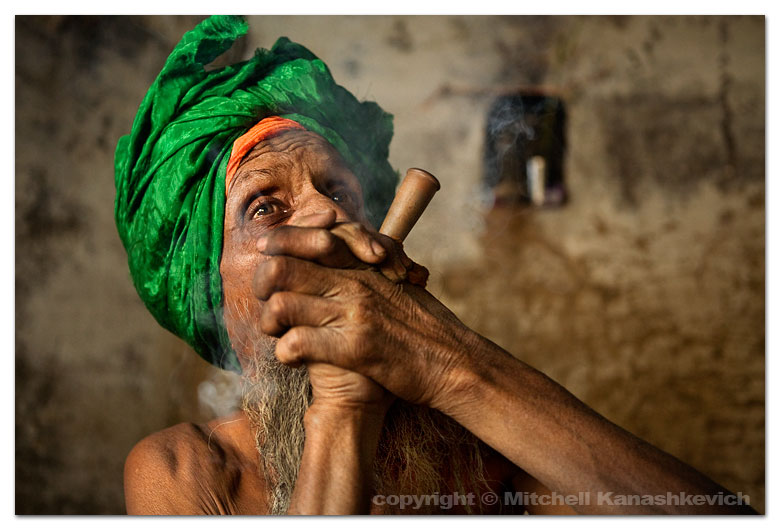 The rest of the photos are just grabs of everyday life by the Narmada river.
The rest of the photos are just grabs of everyday life by the Narmada river.
